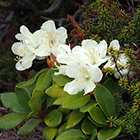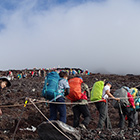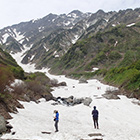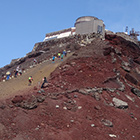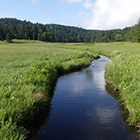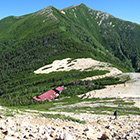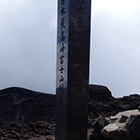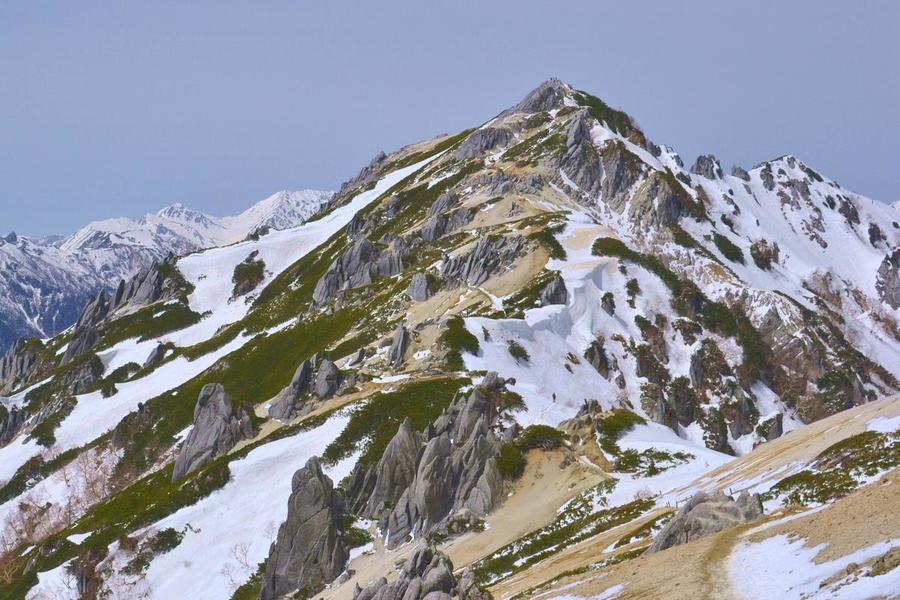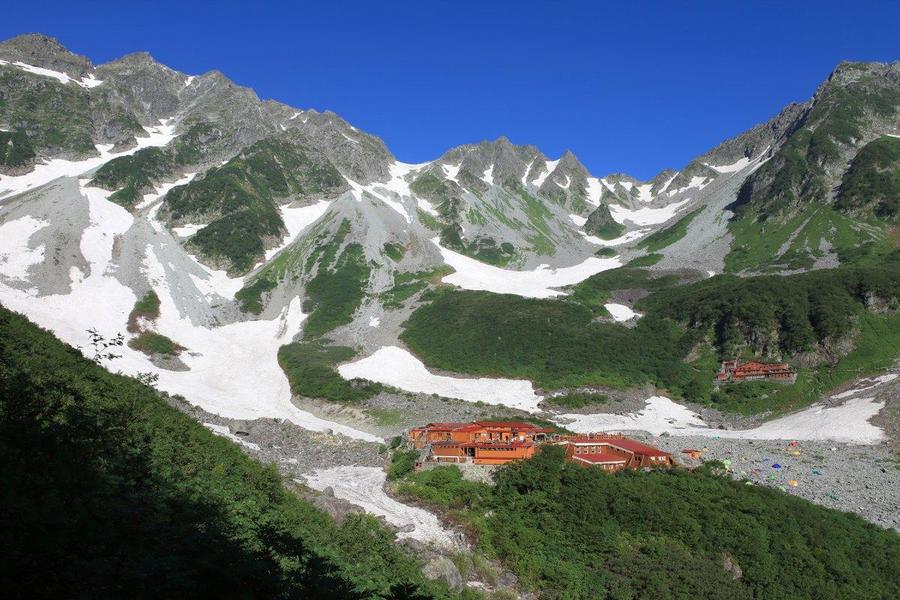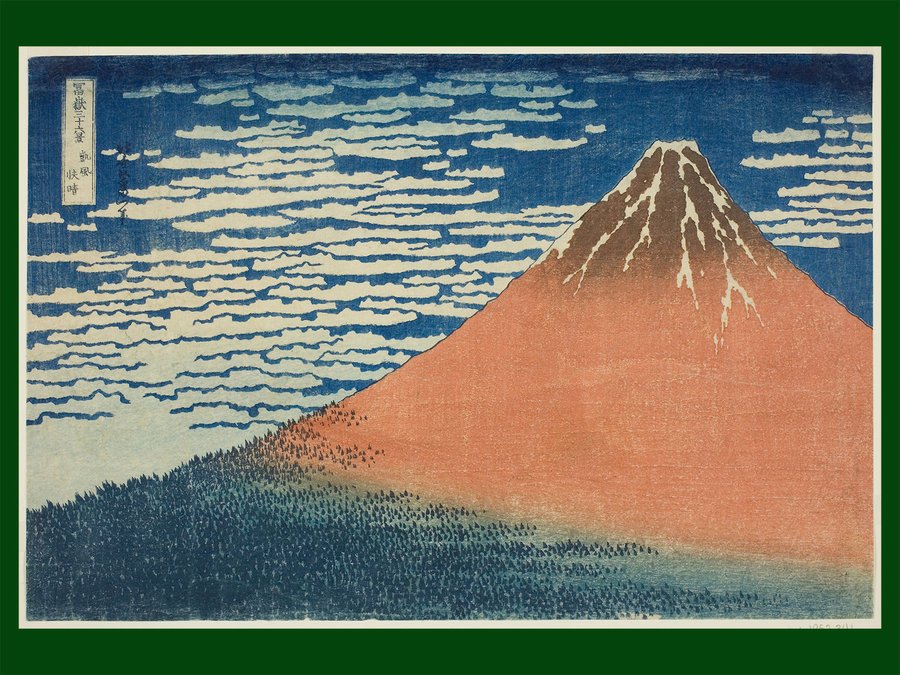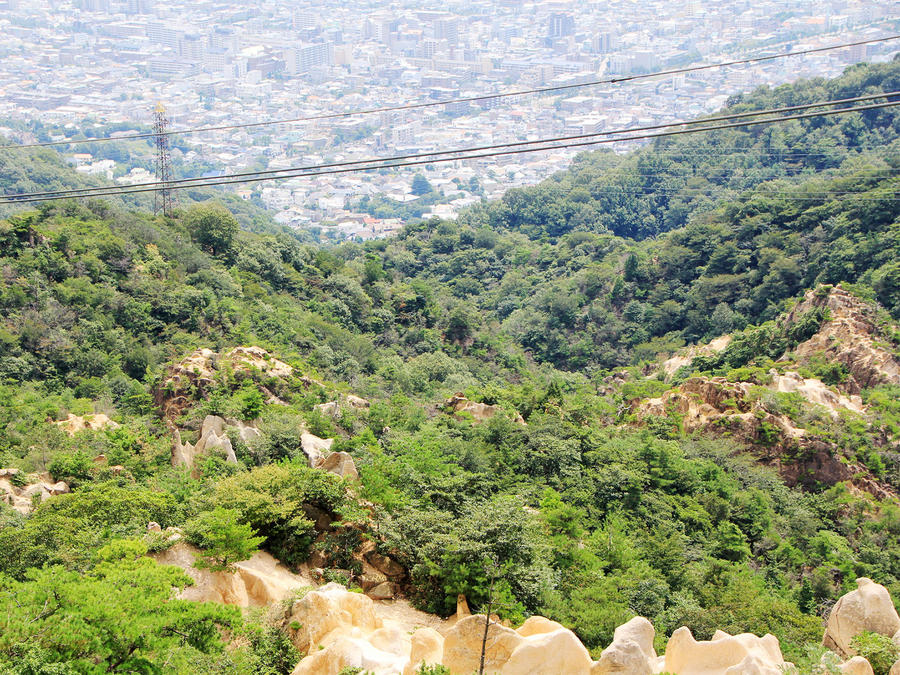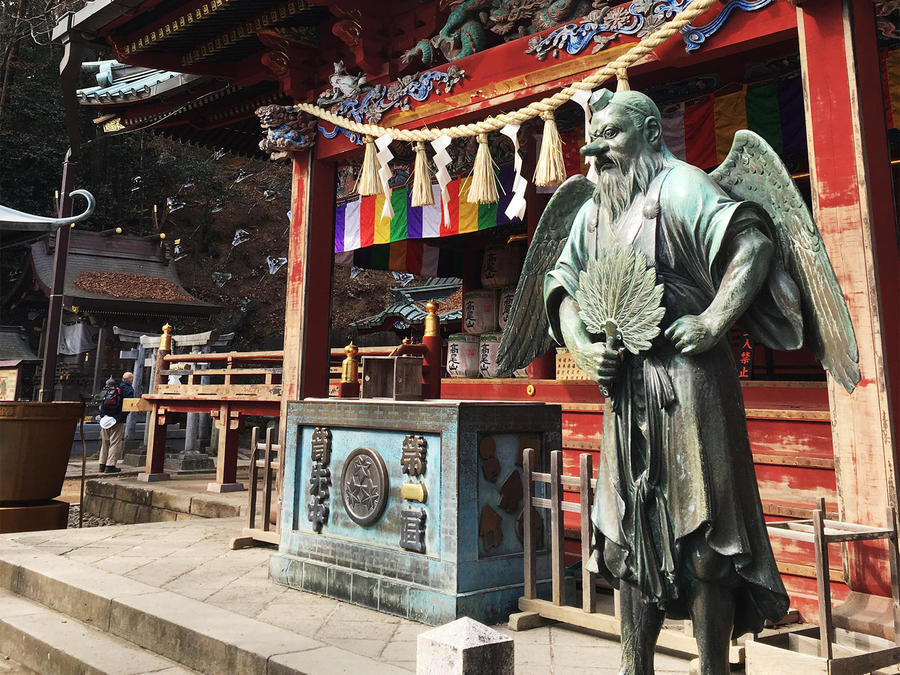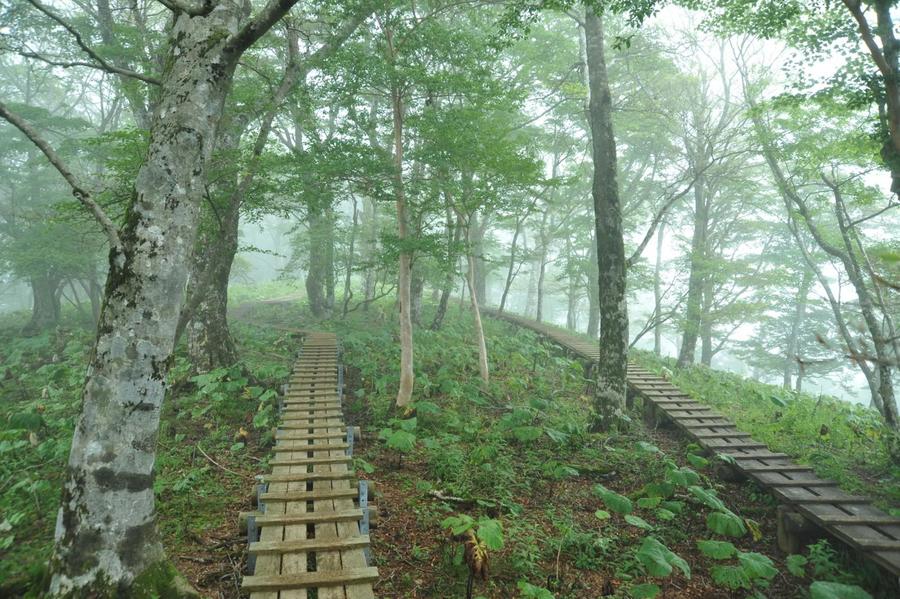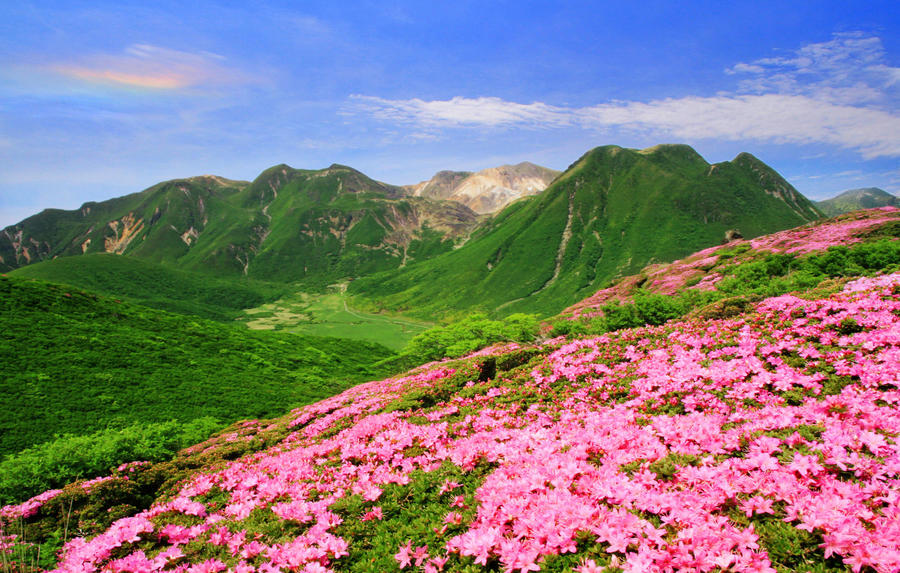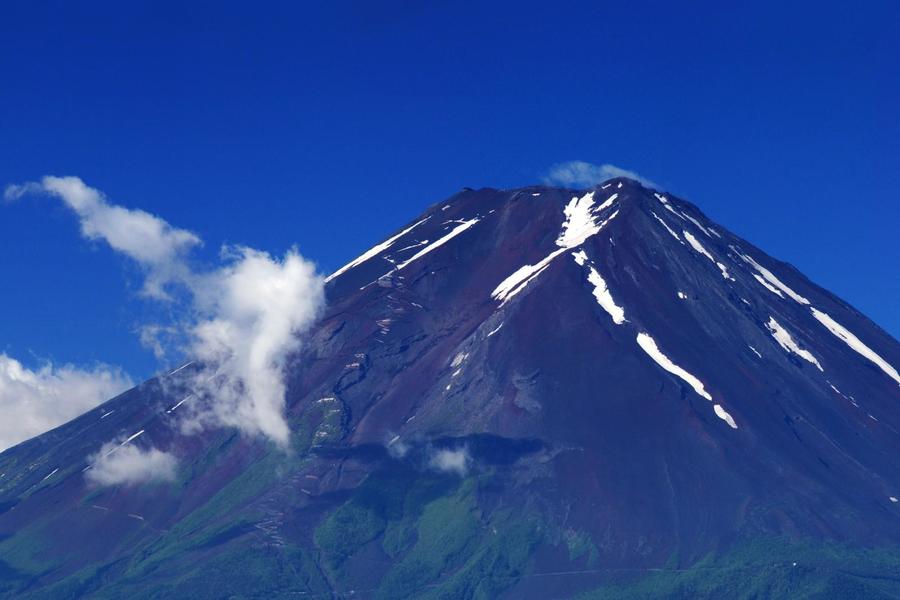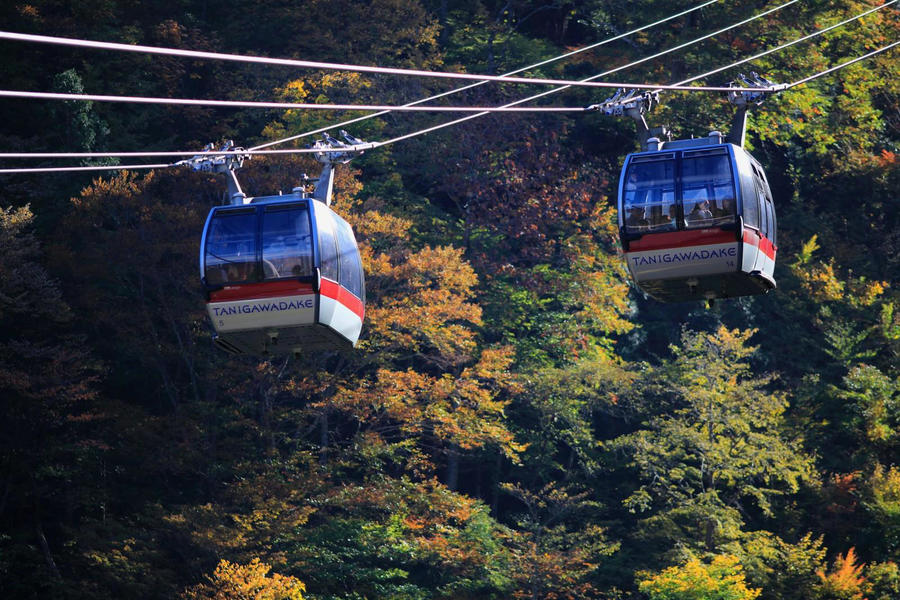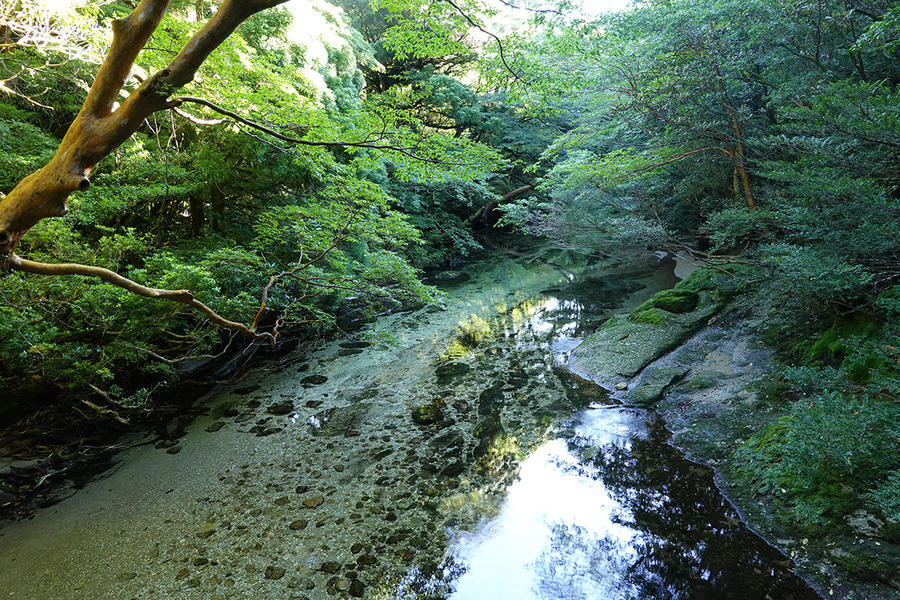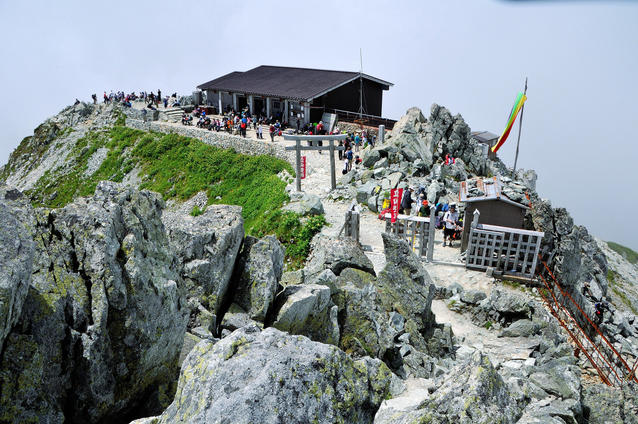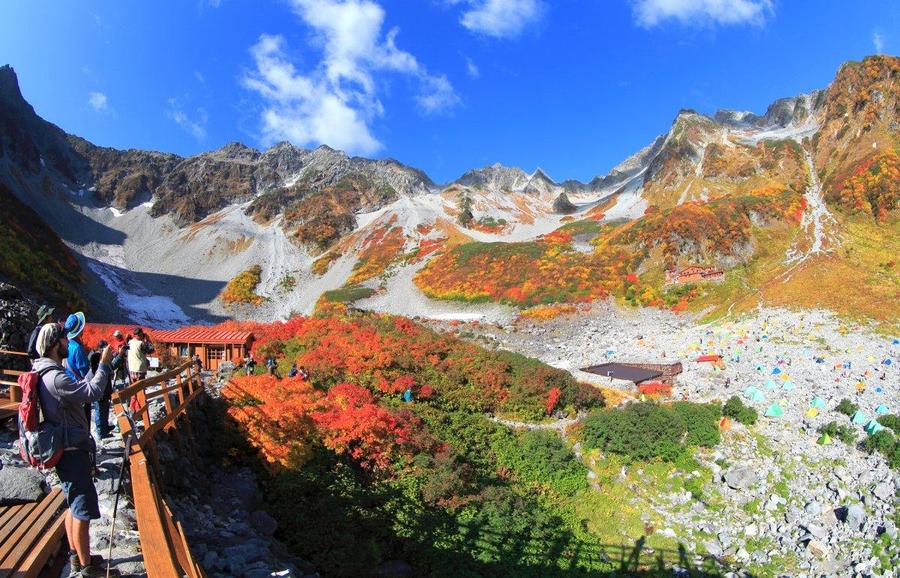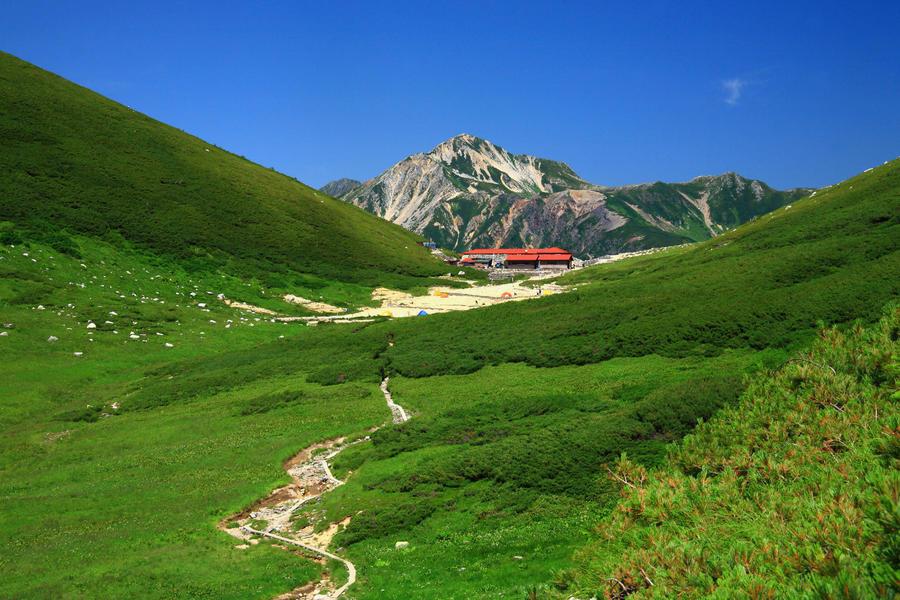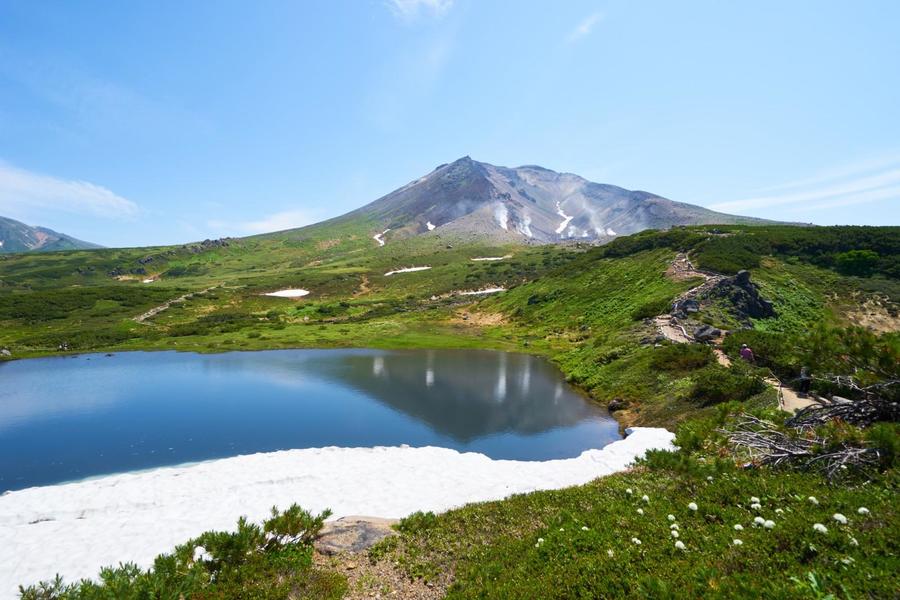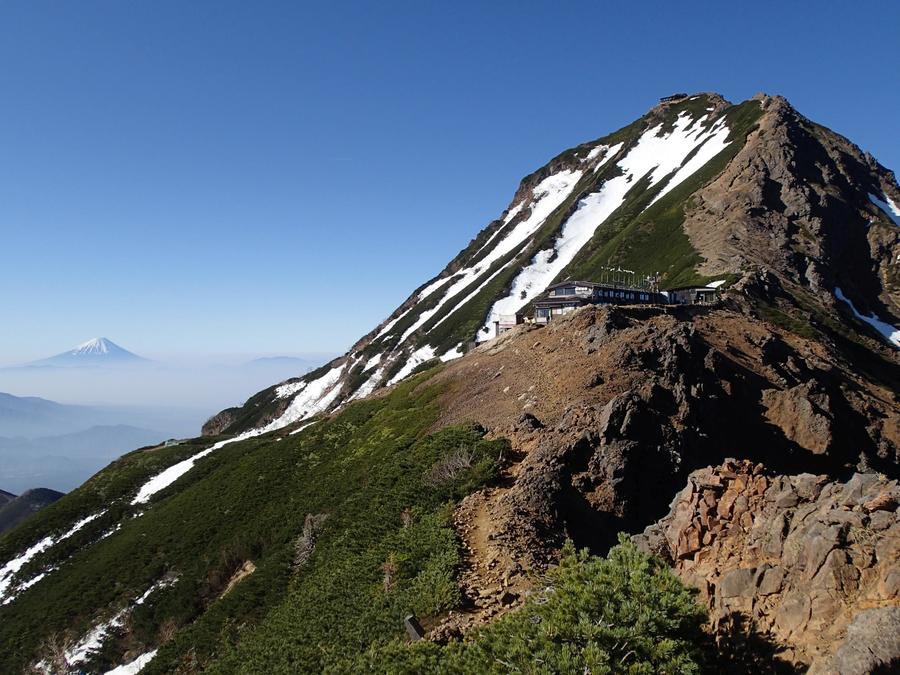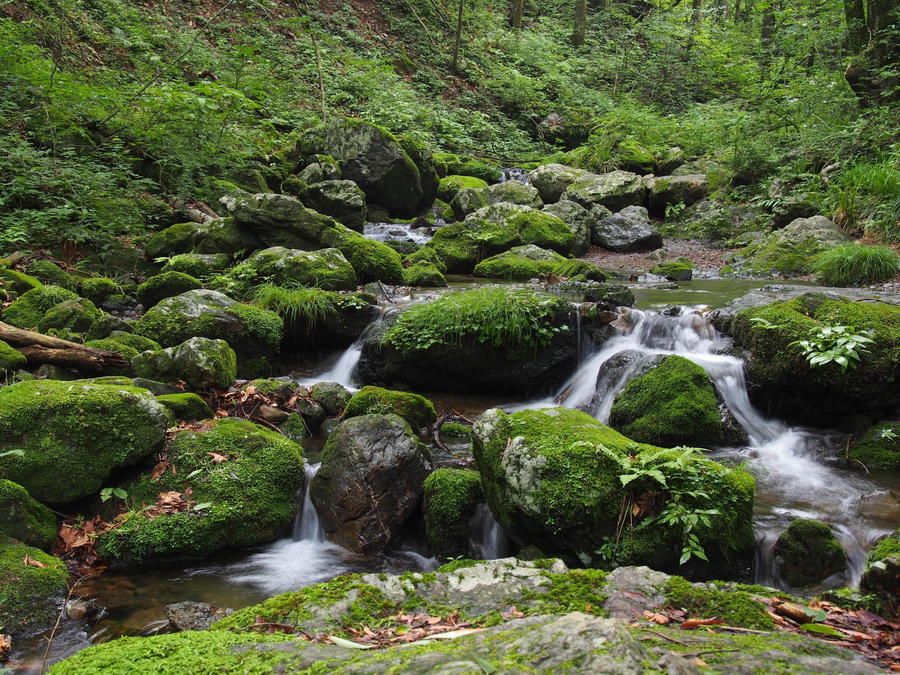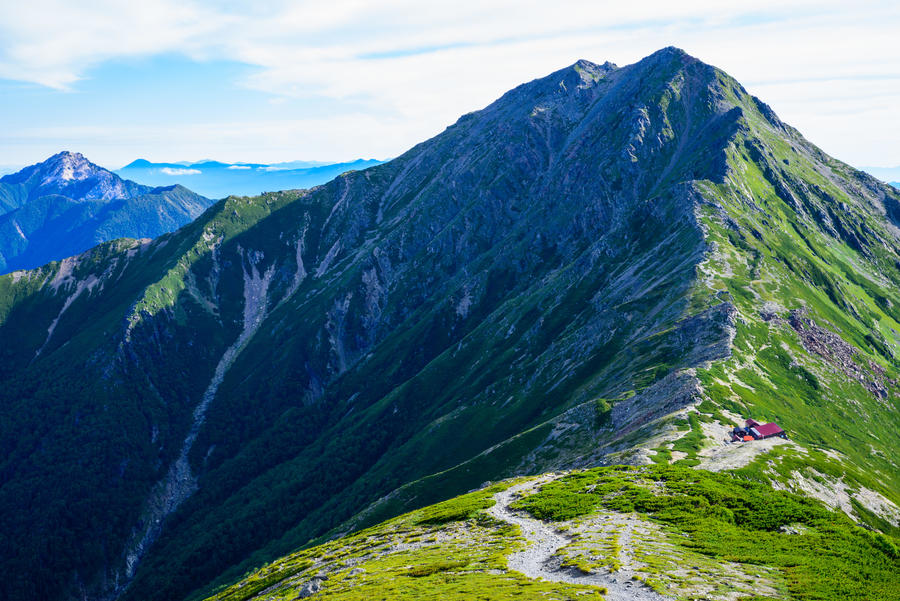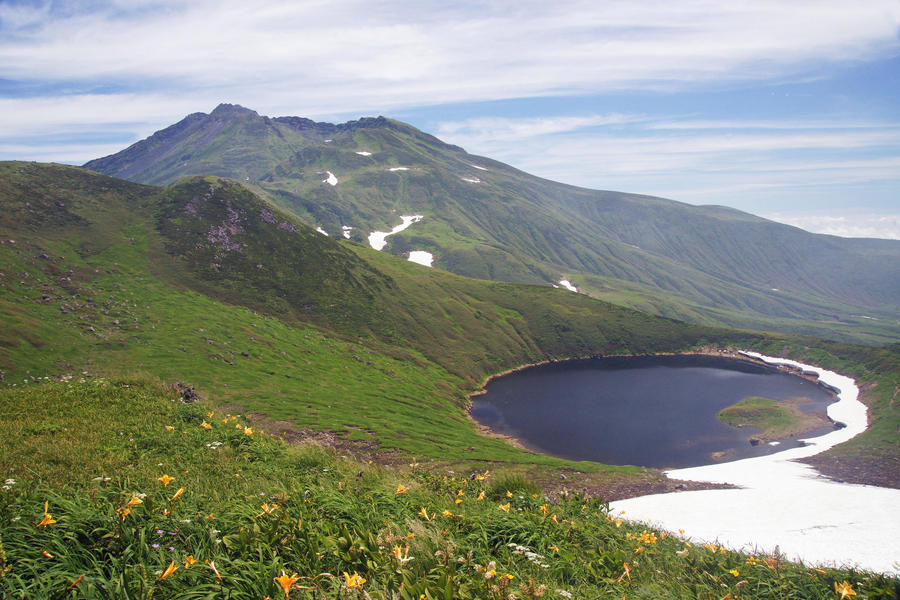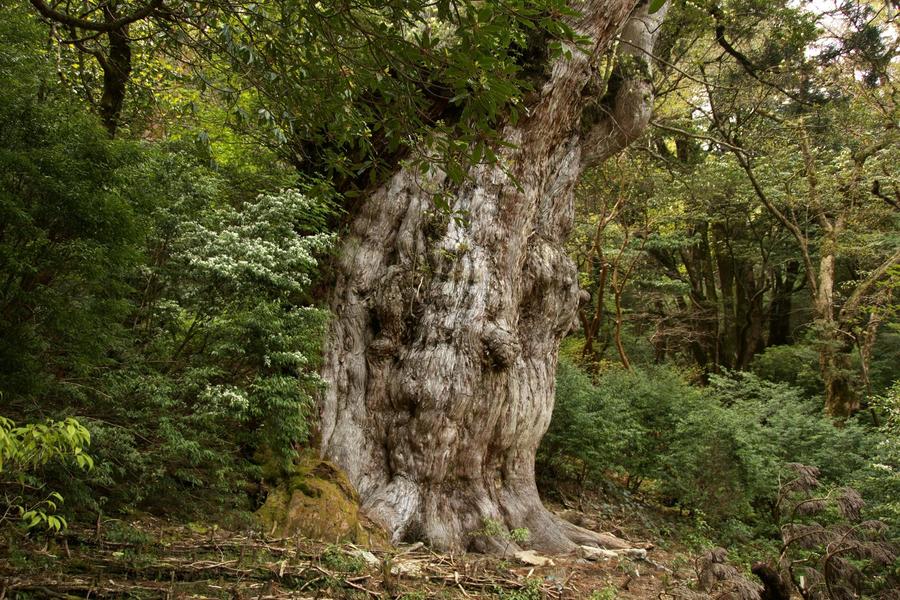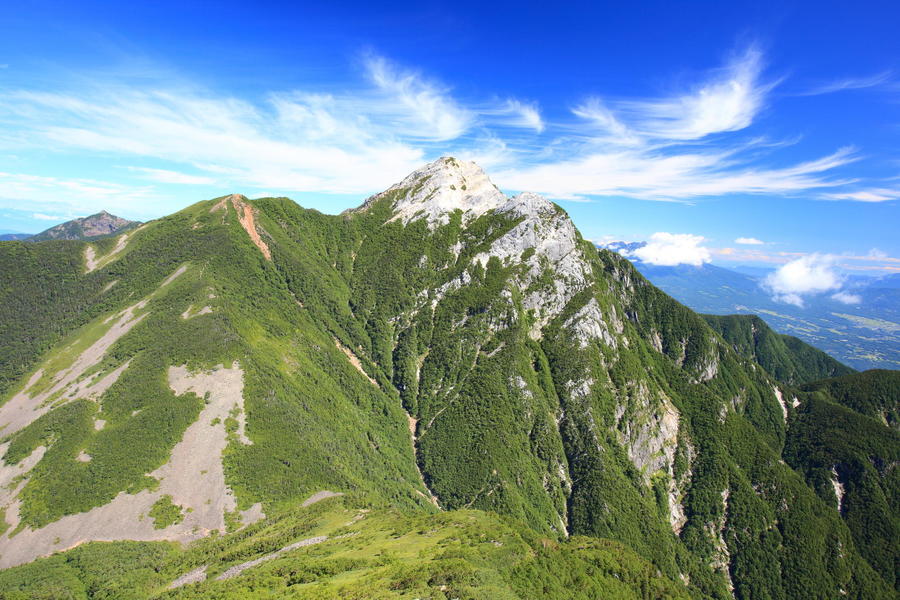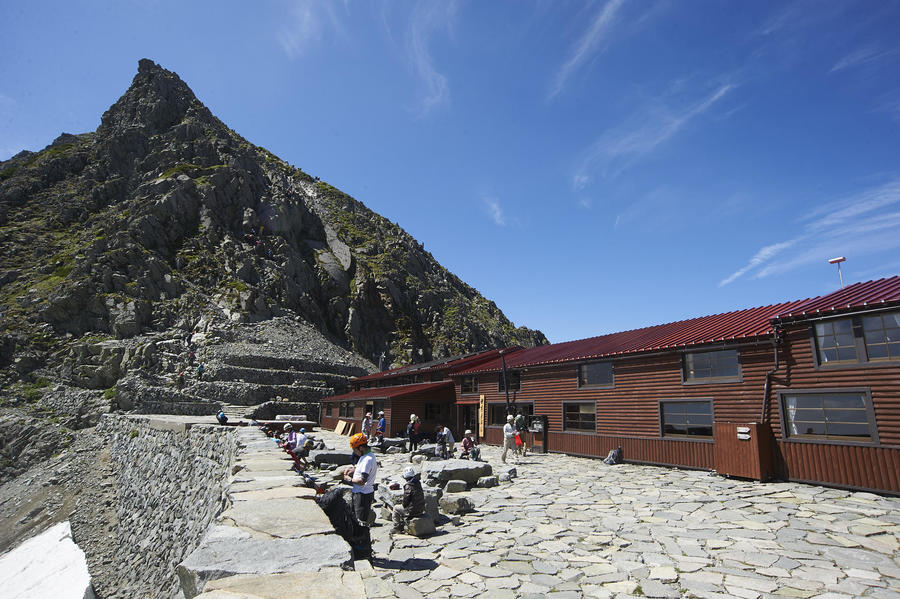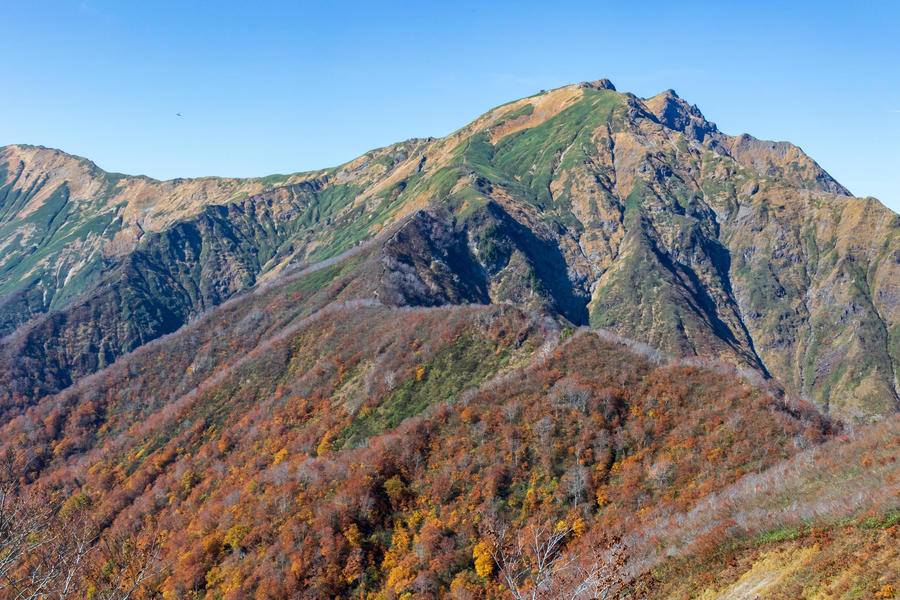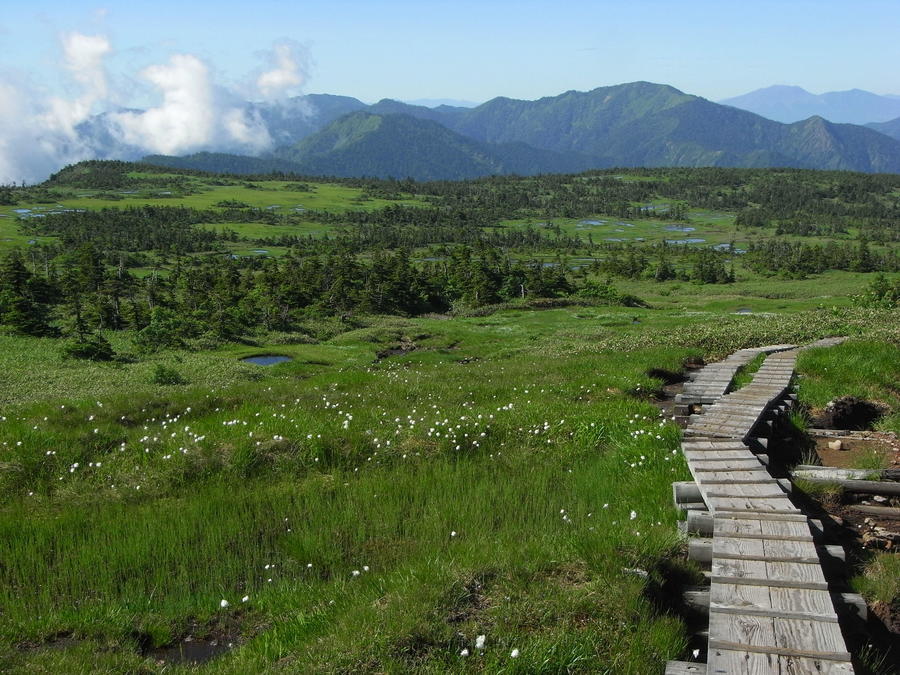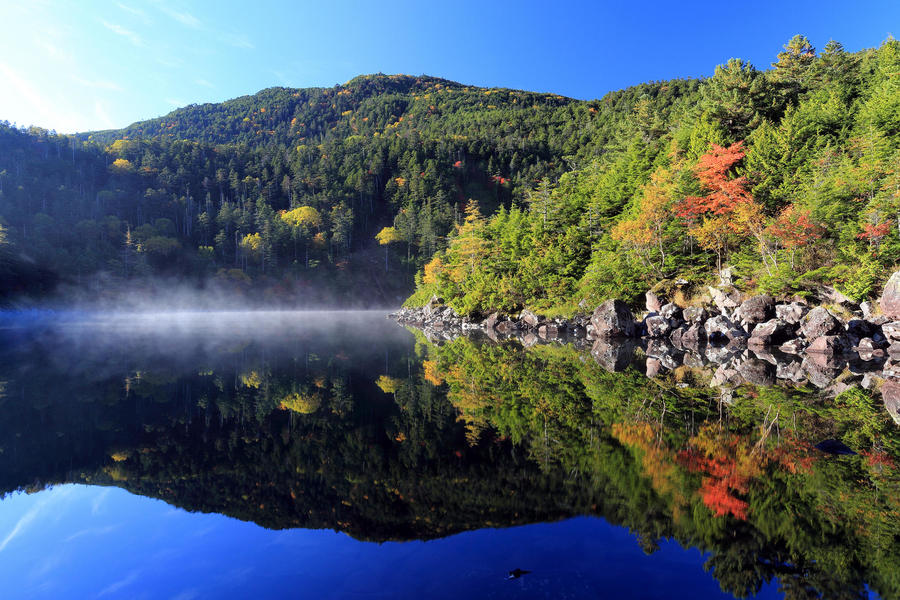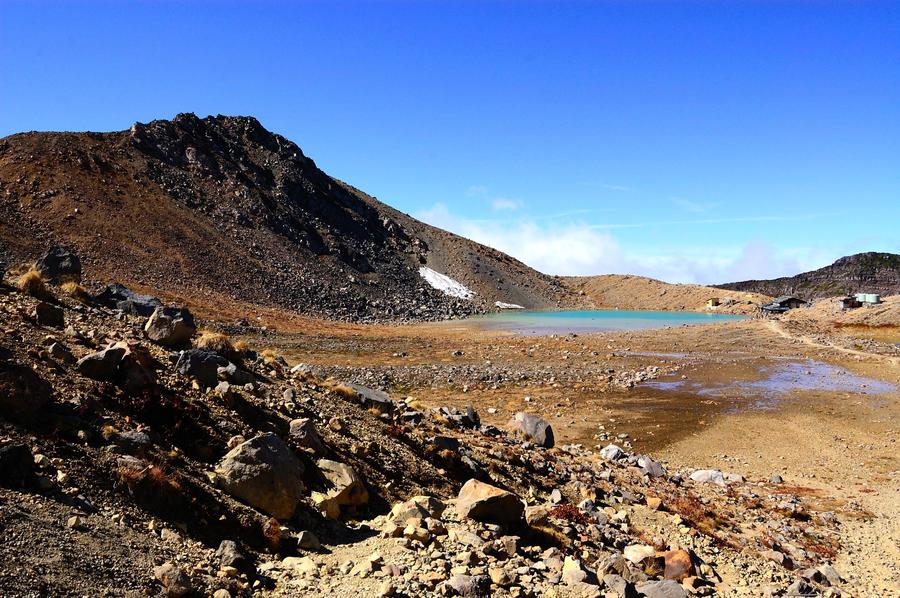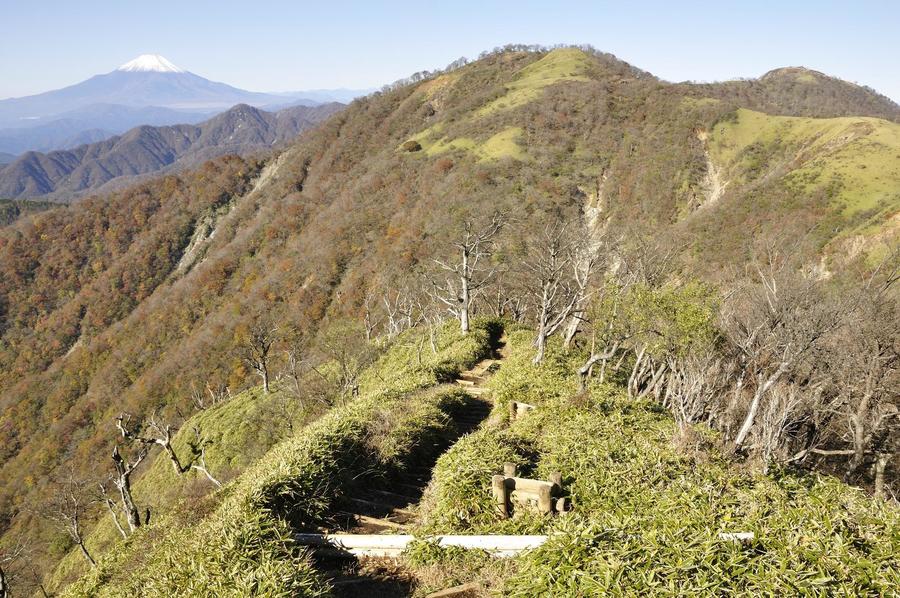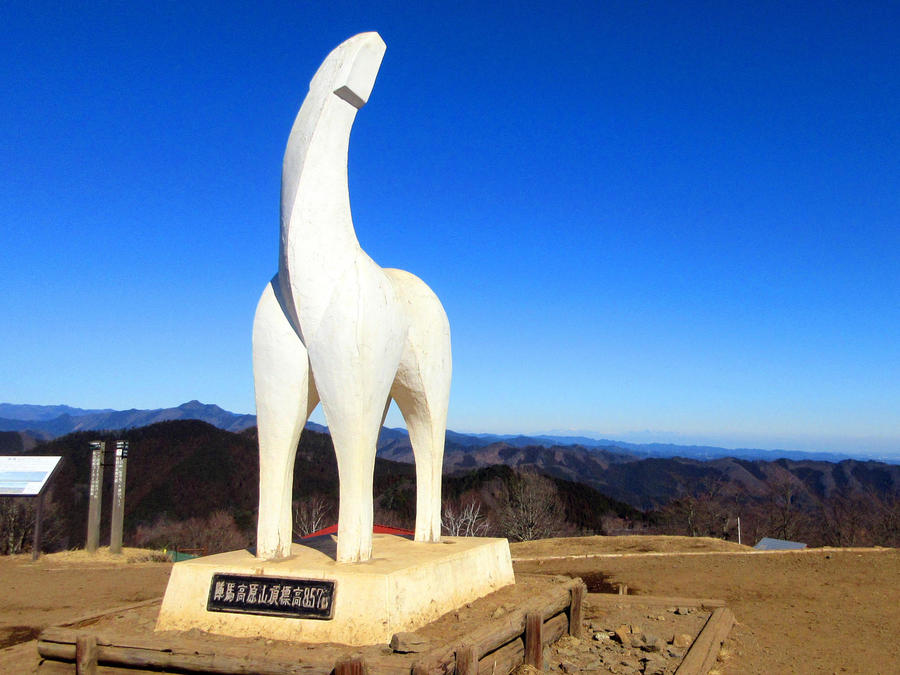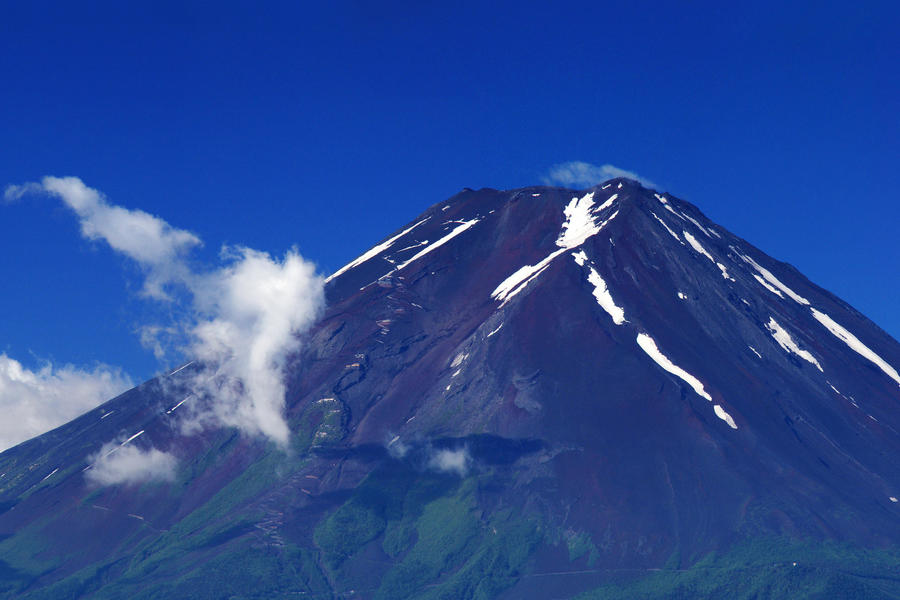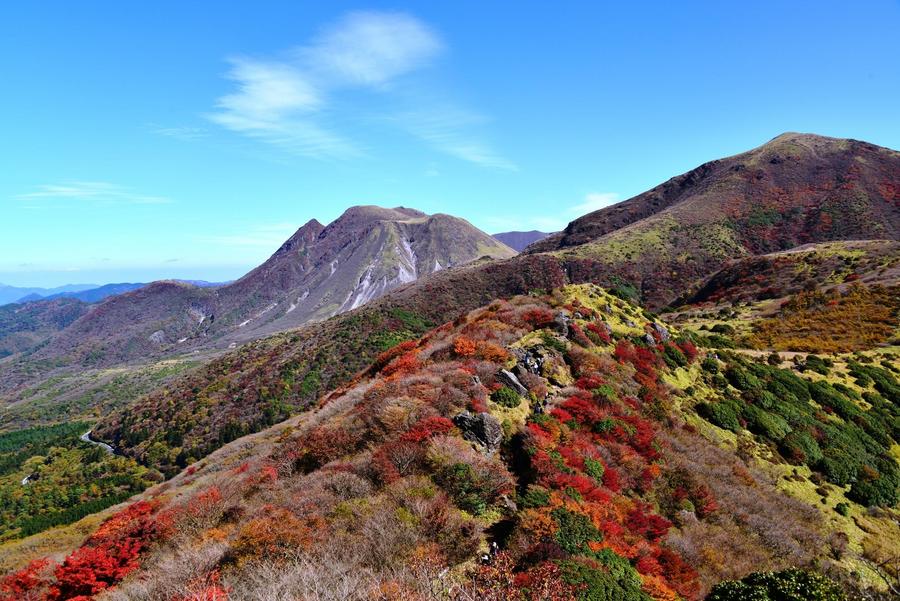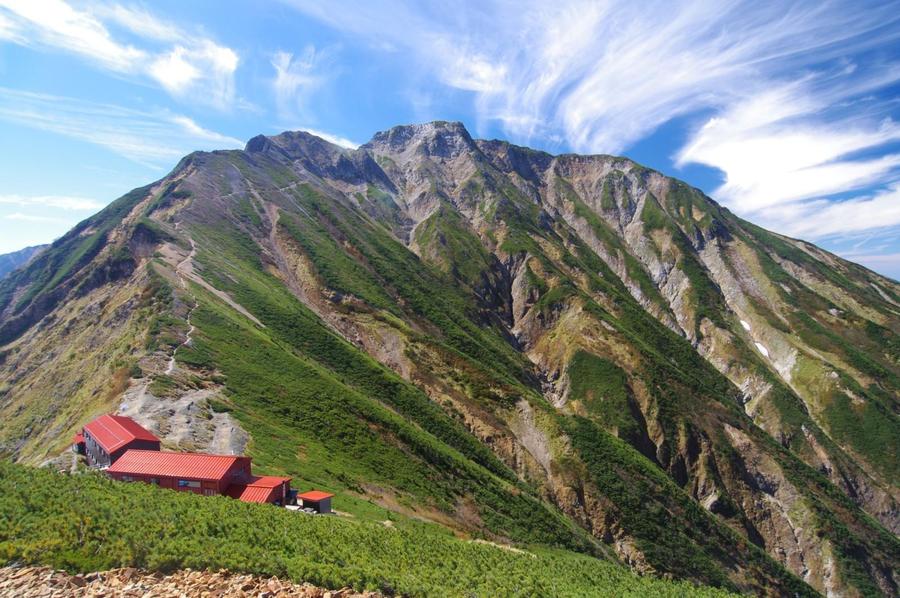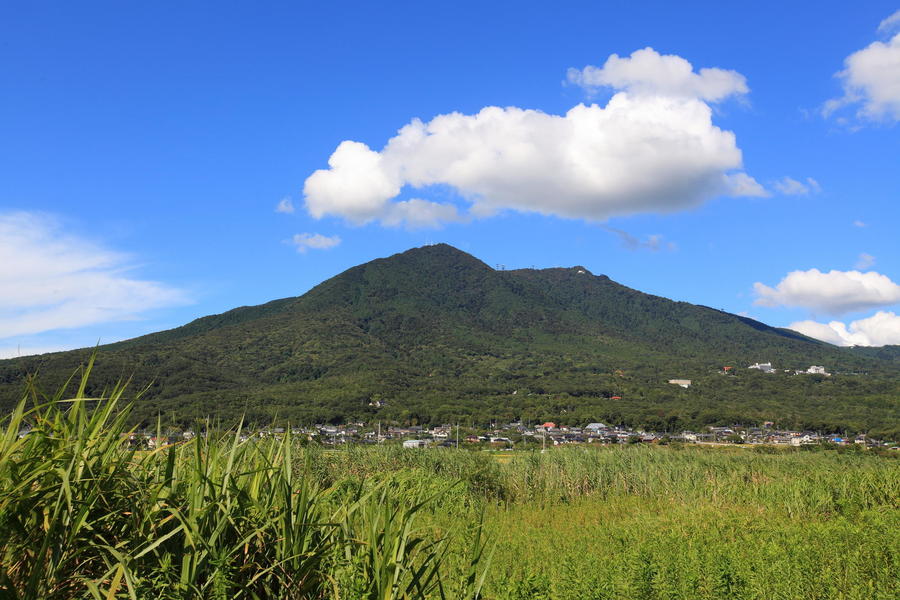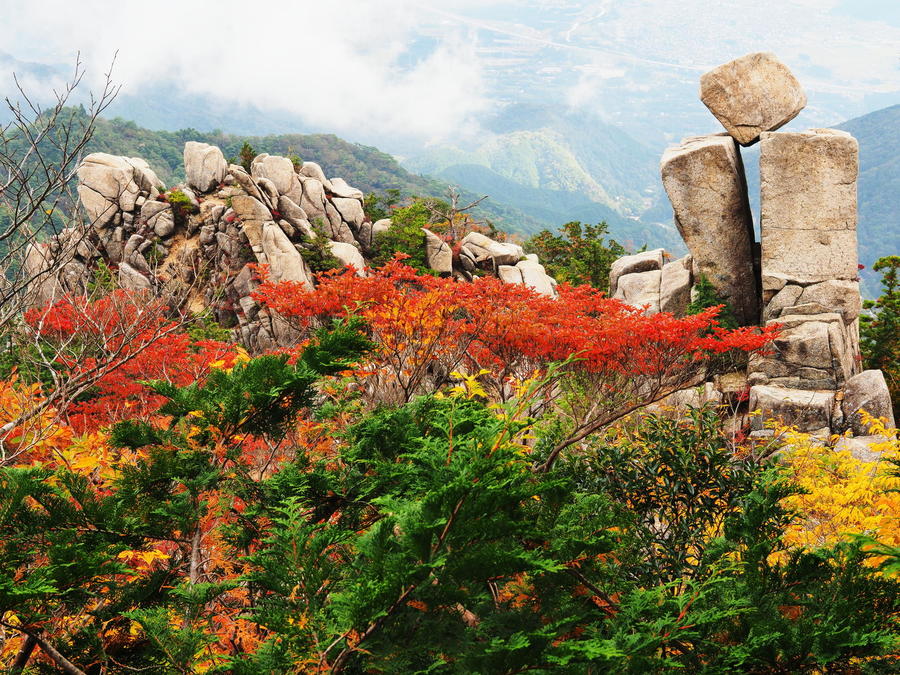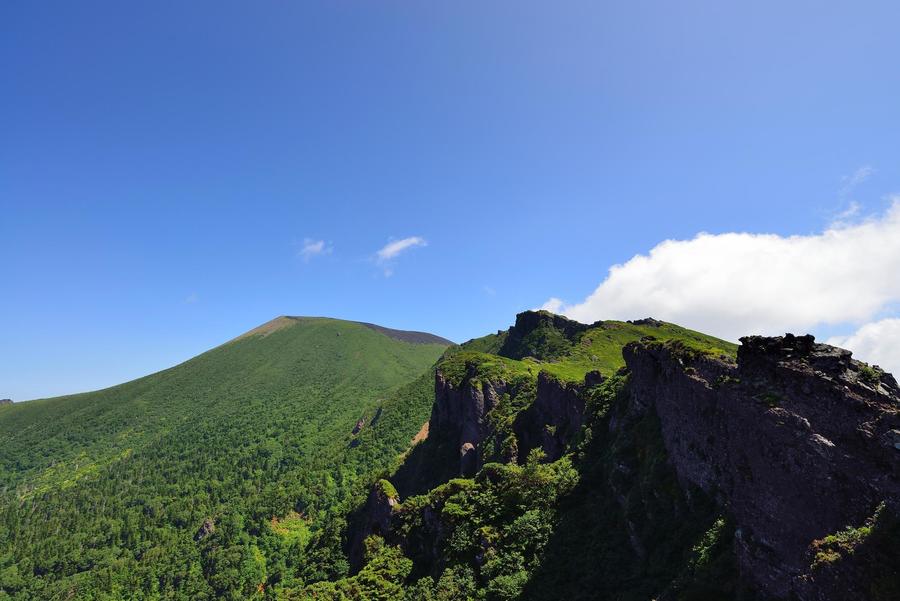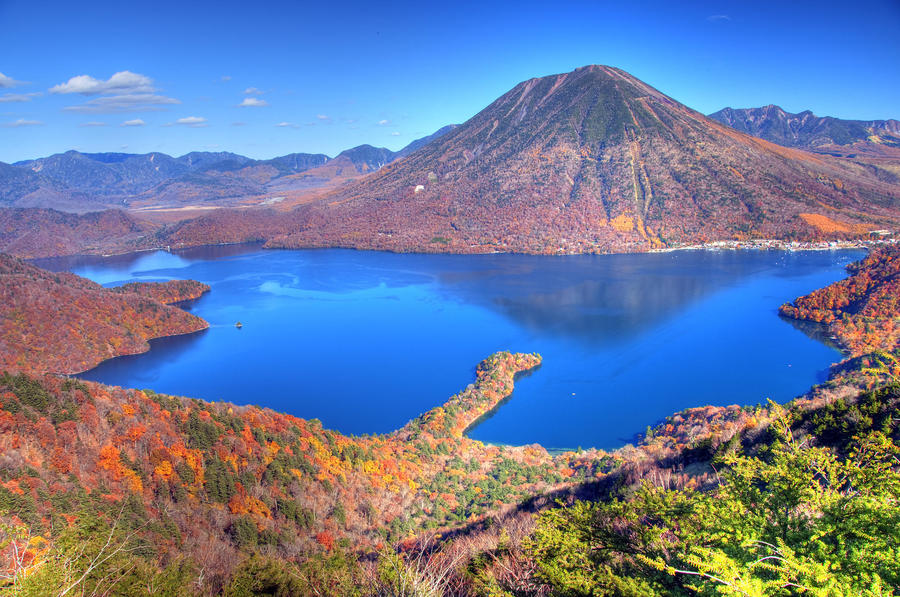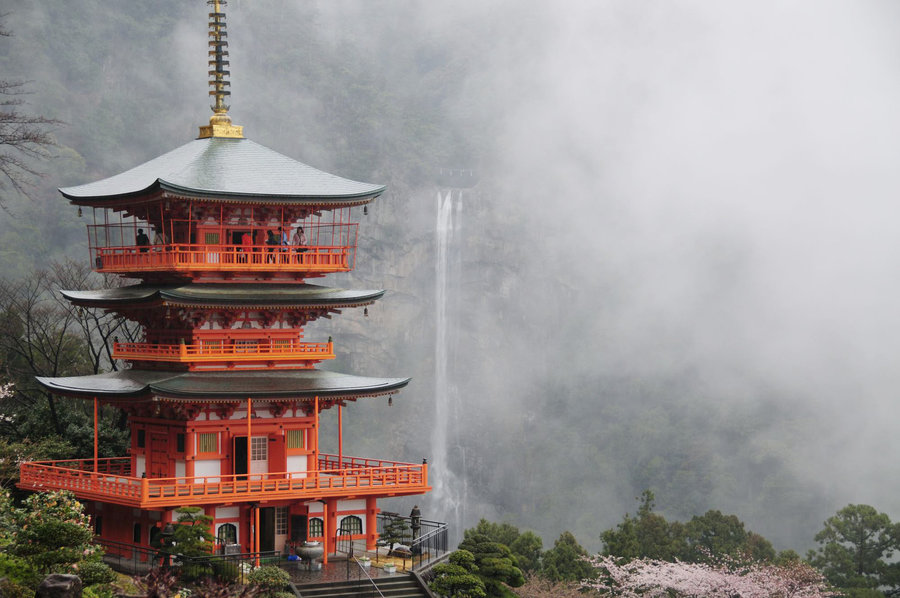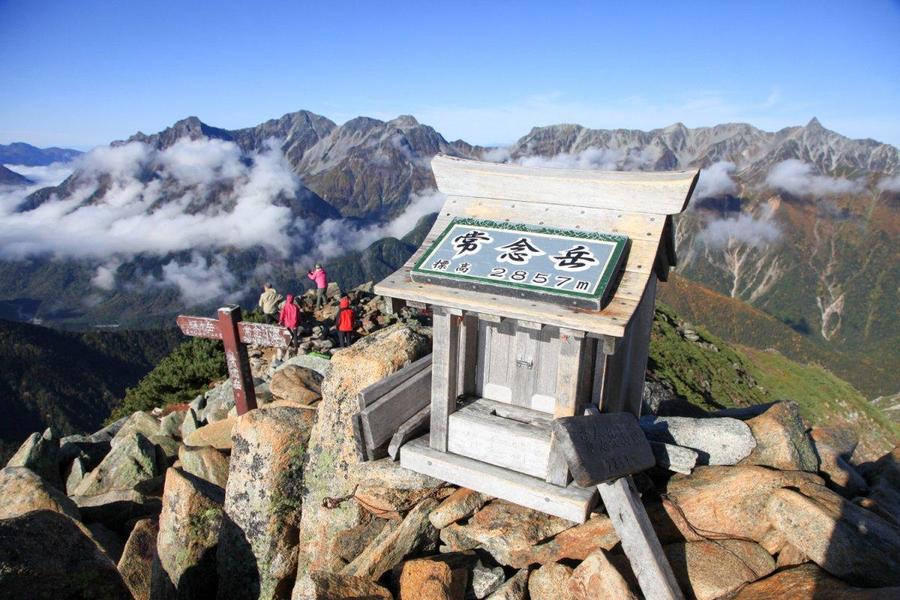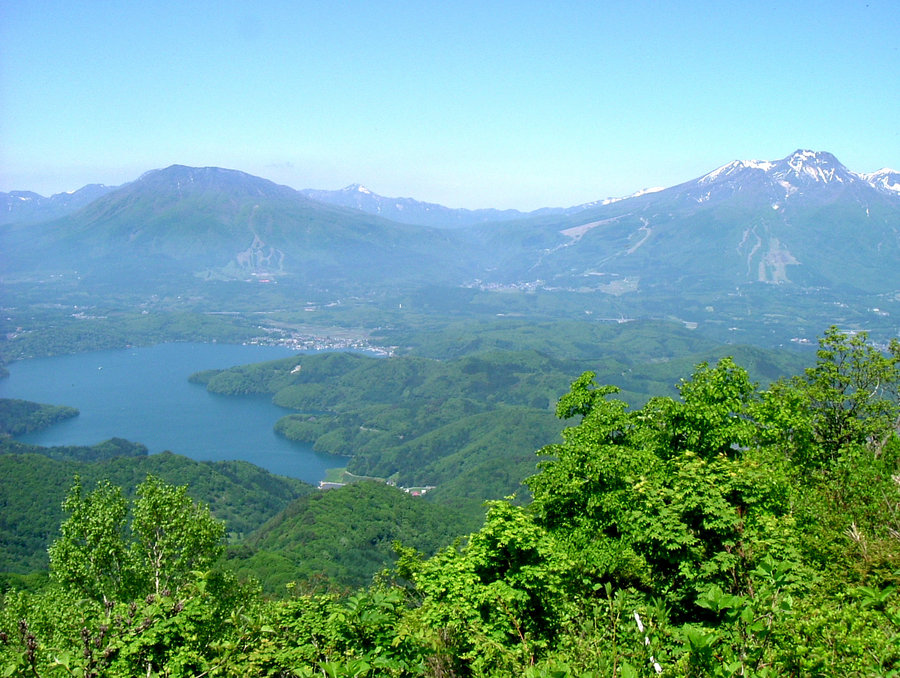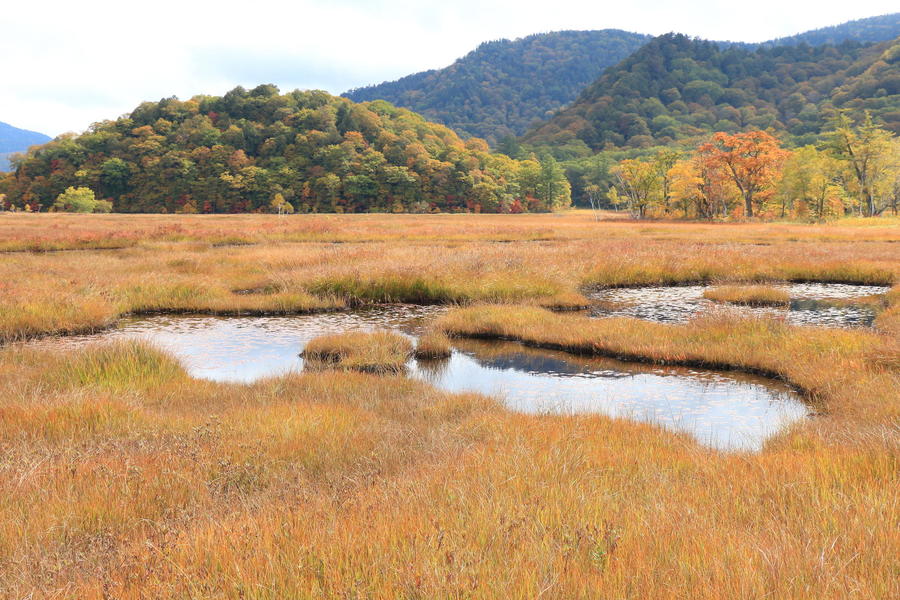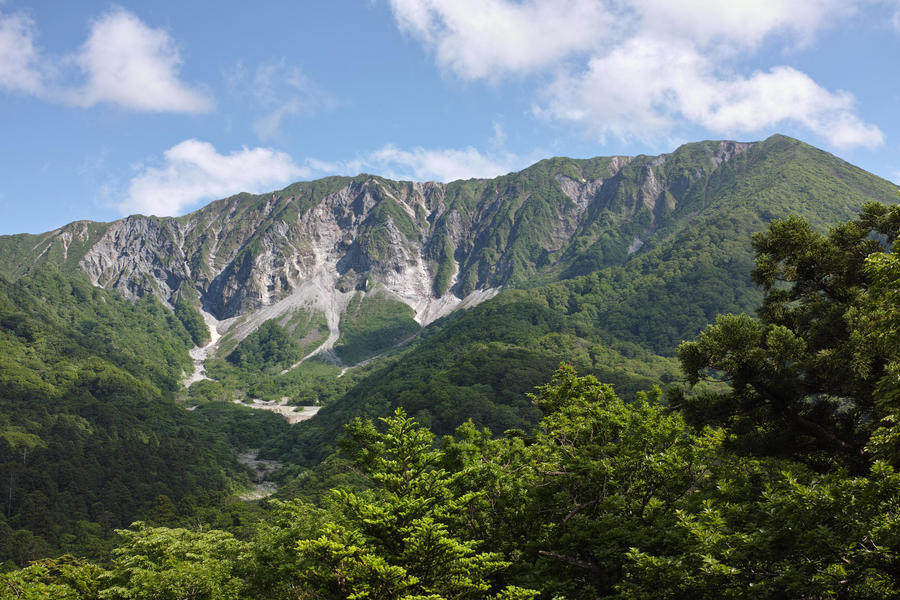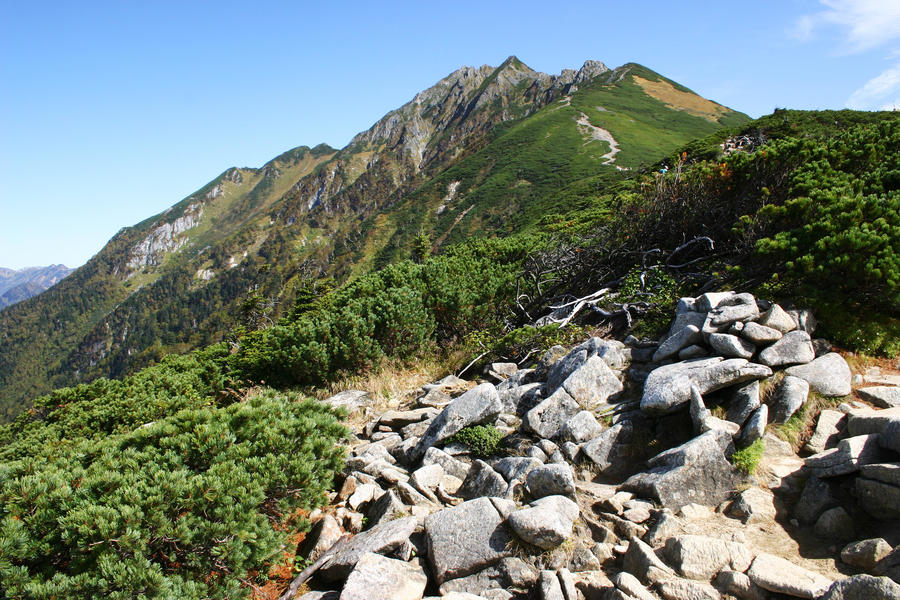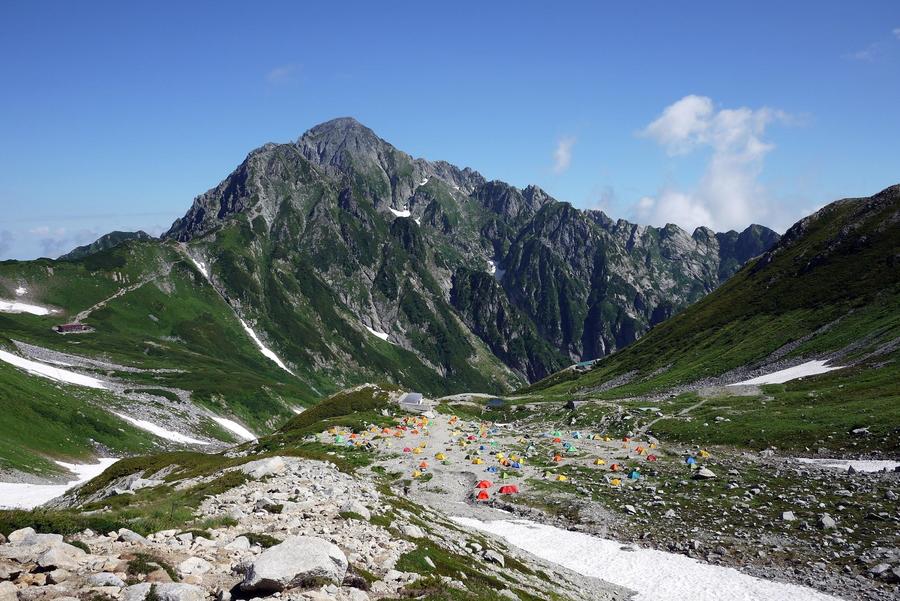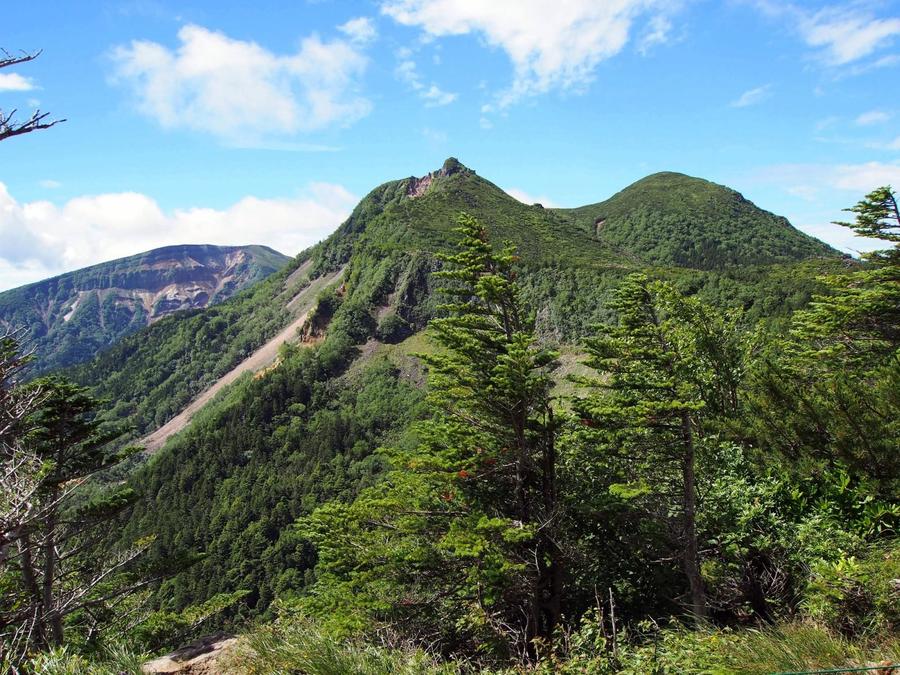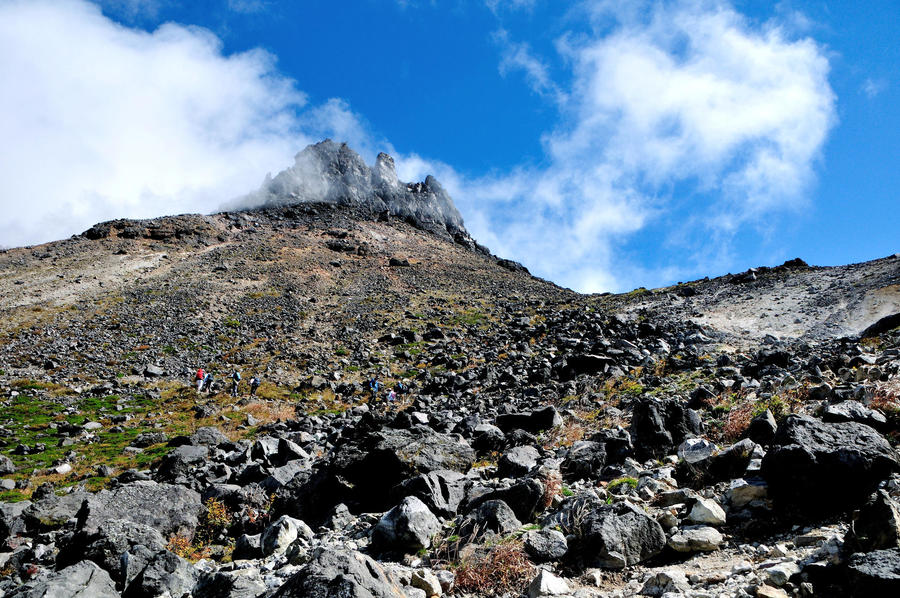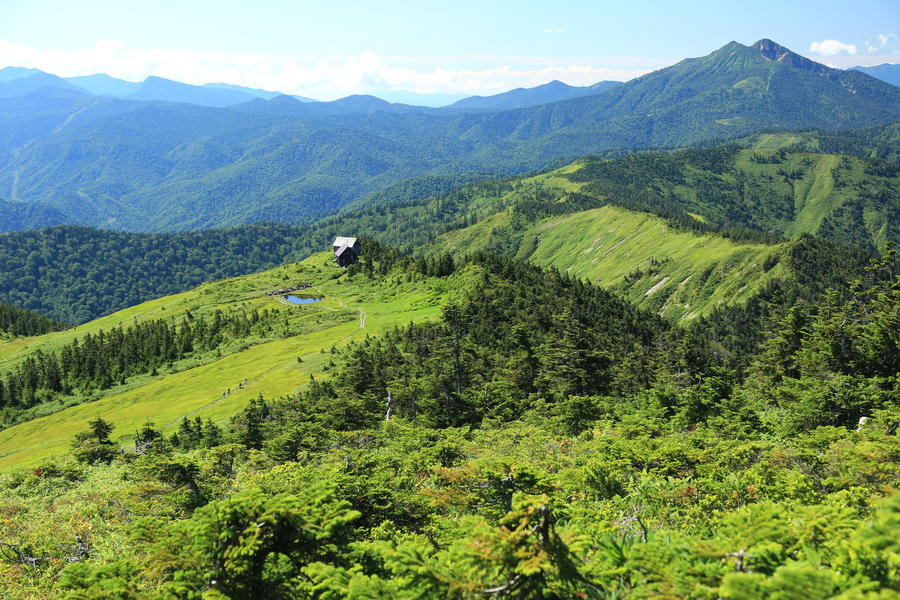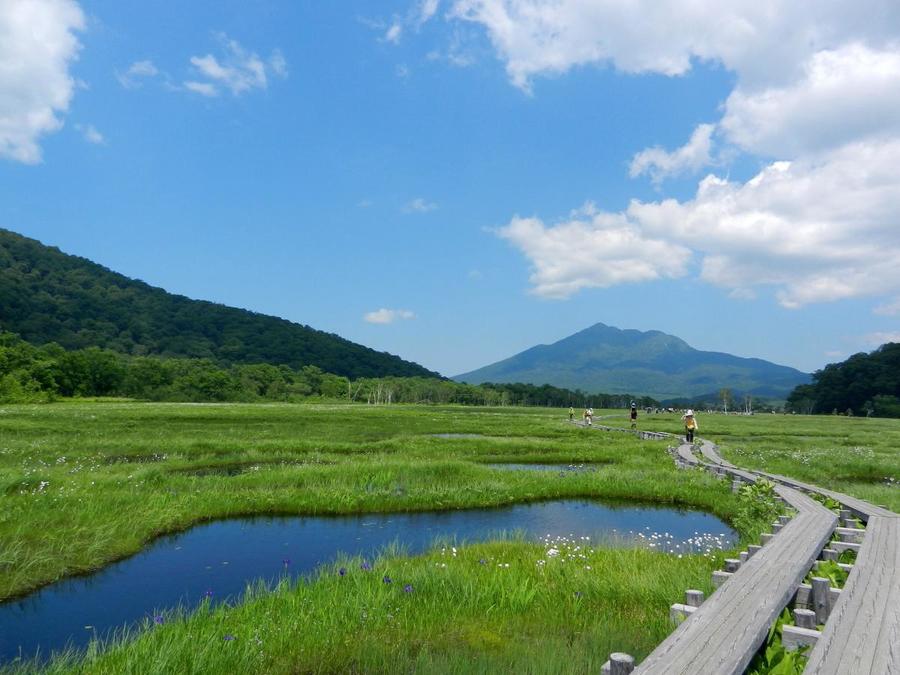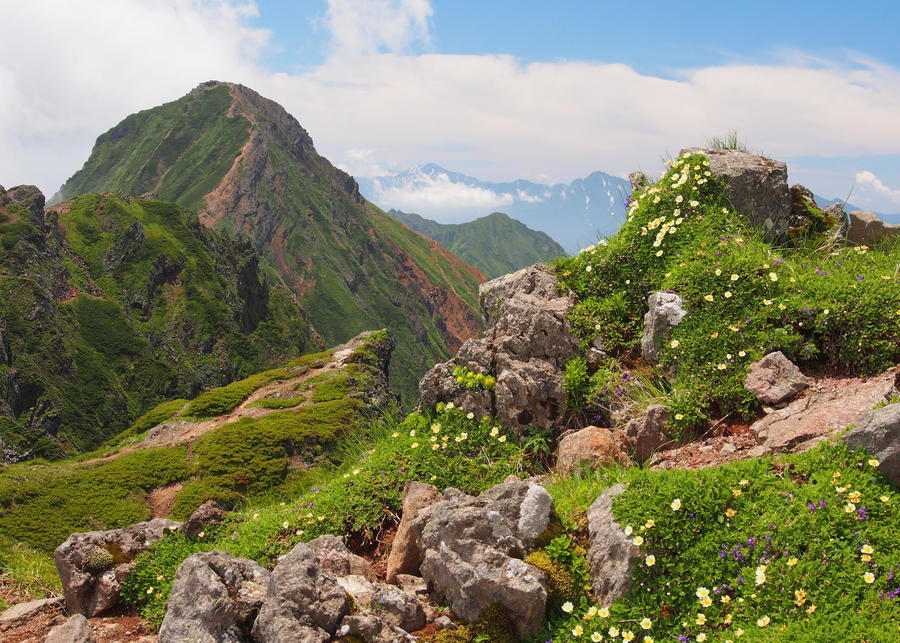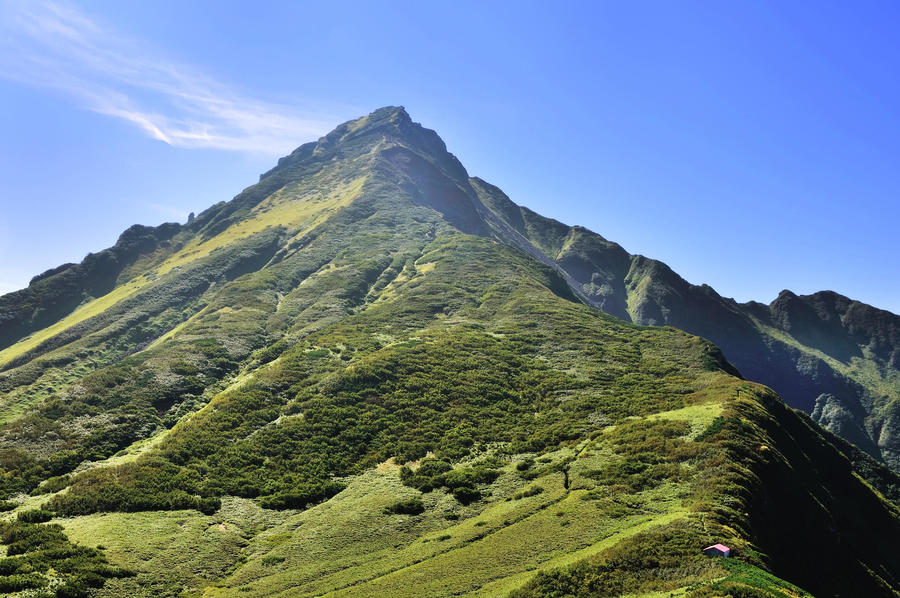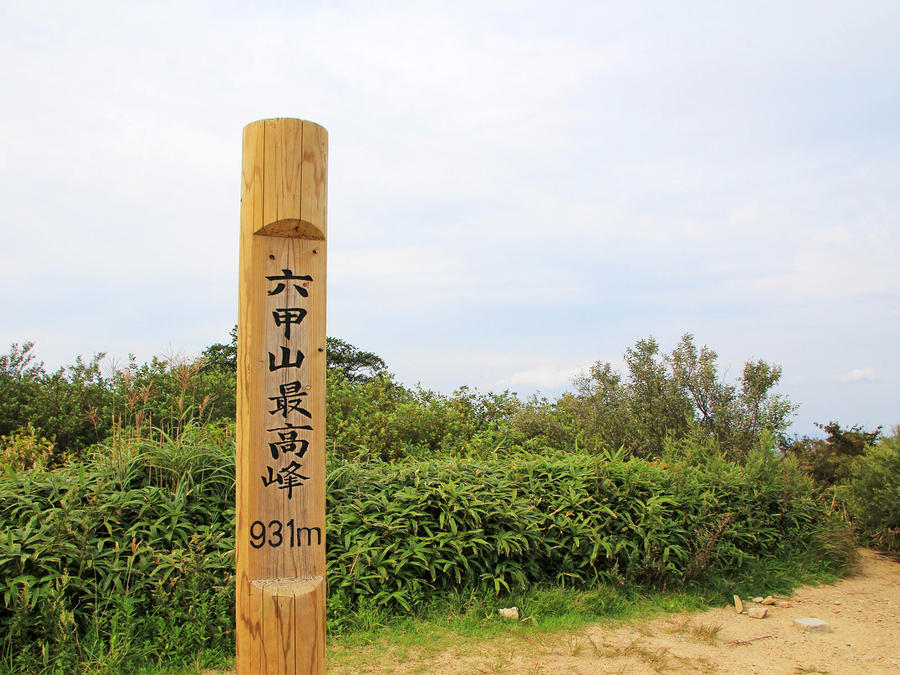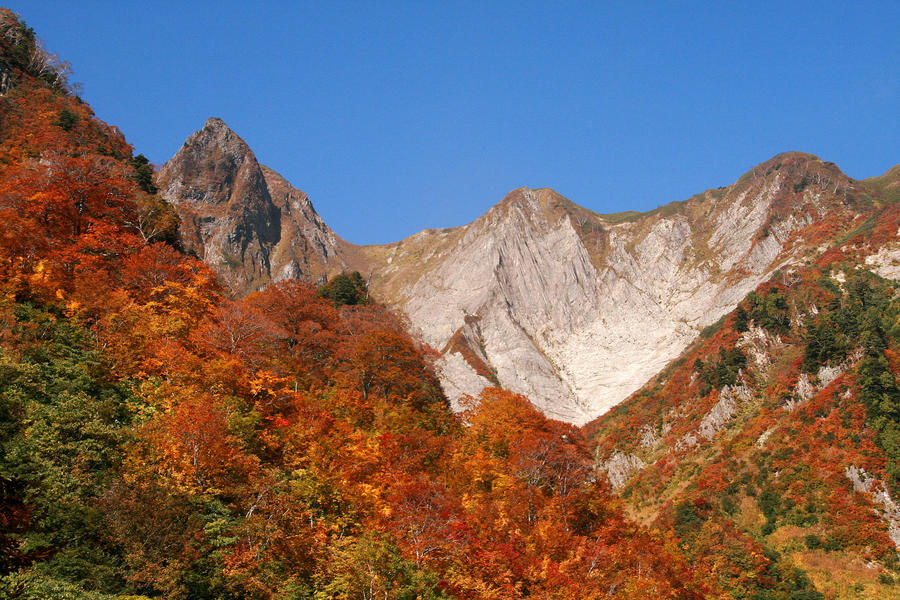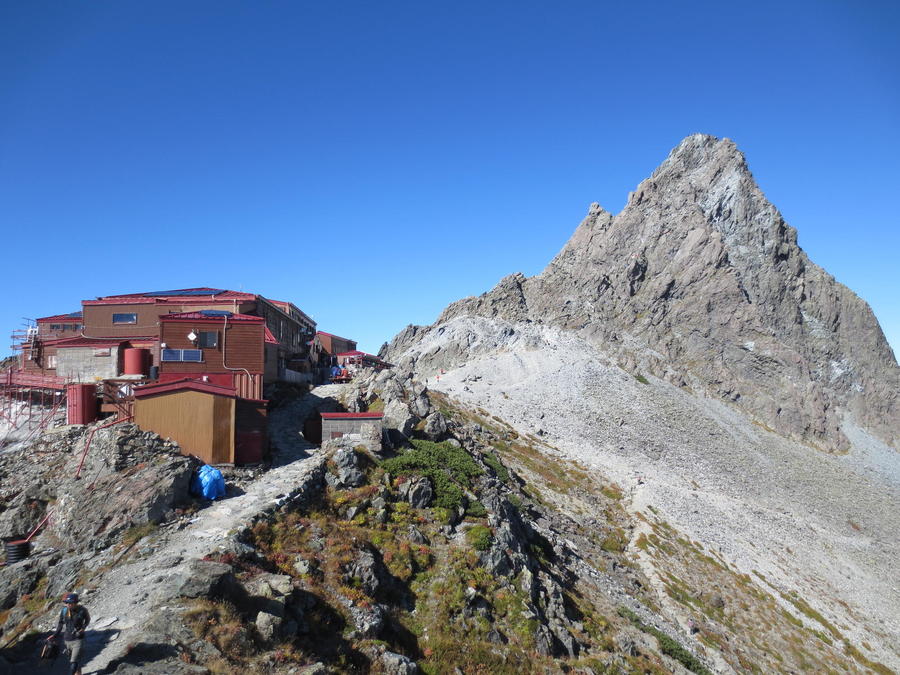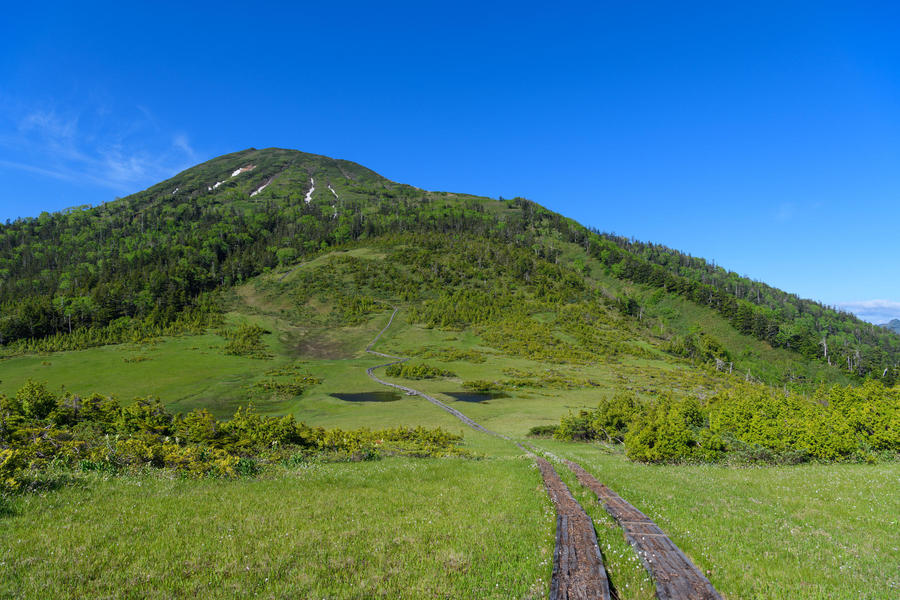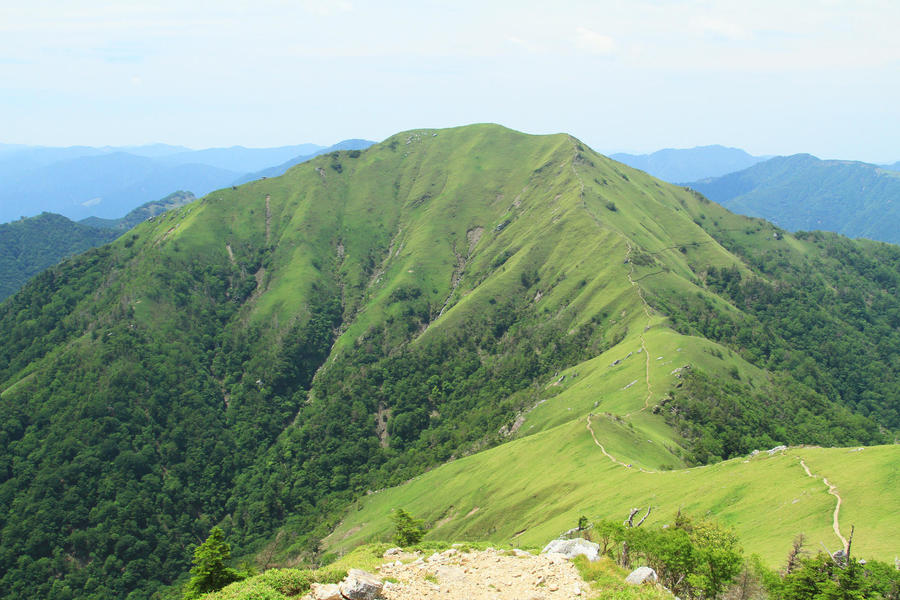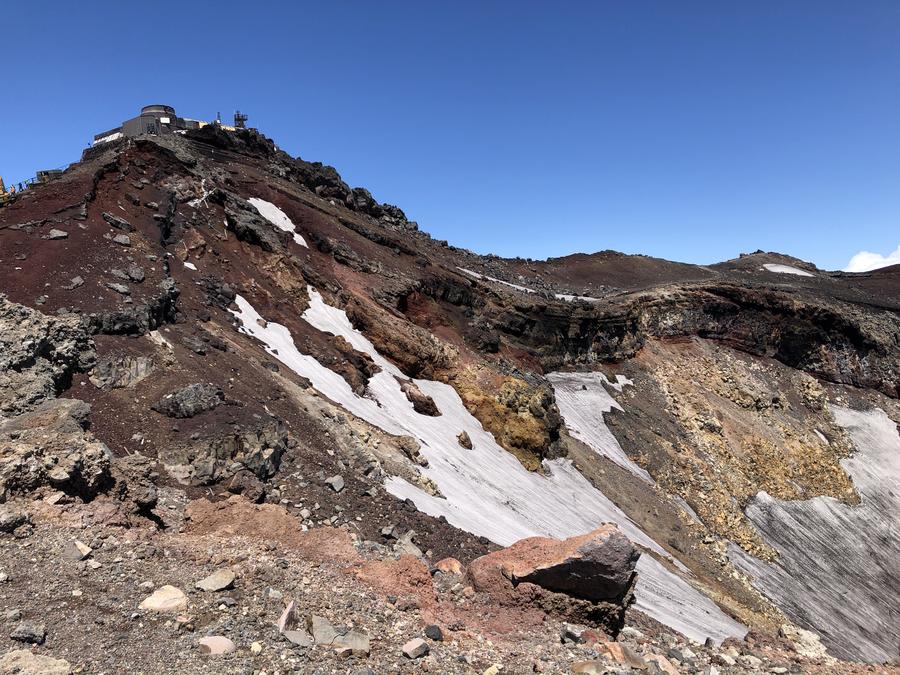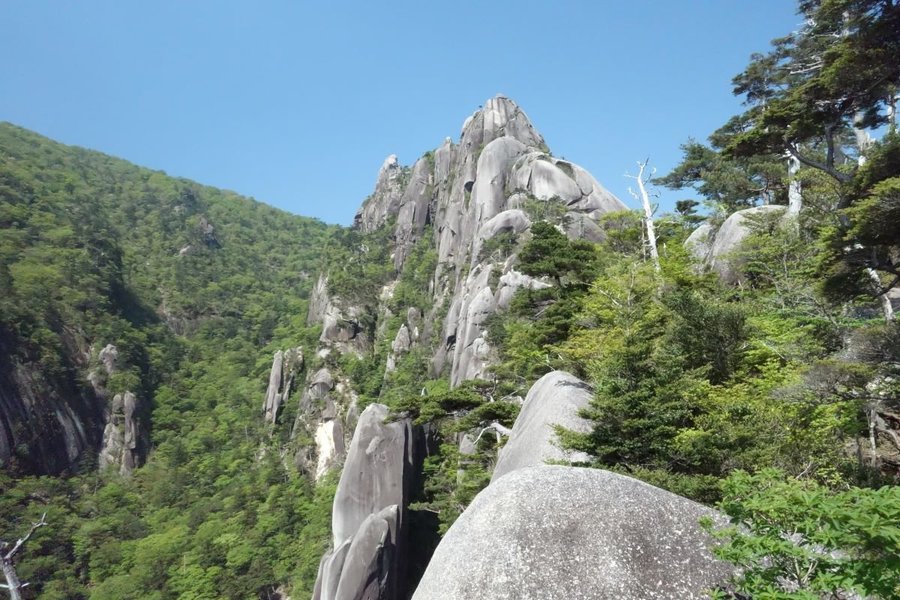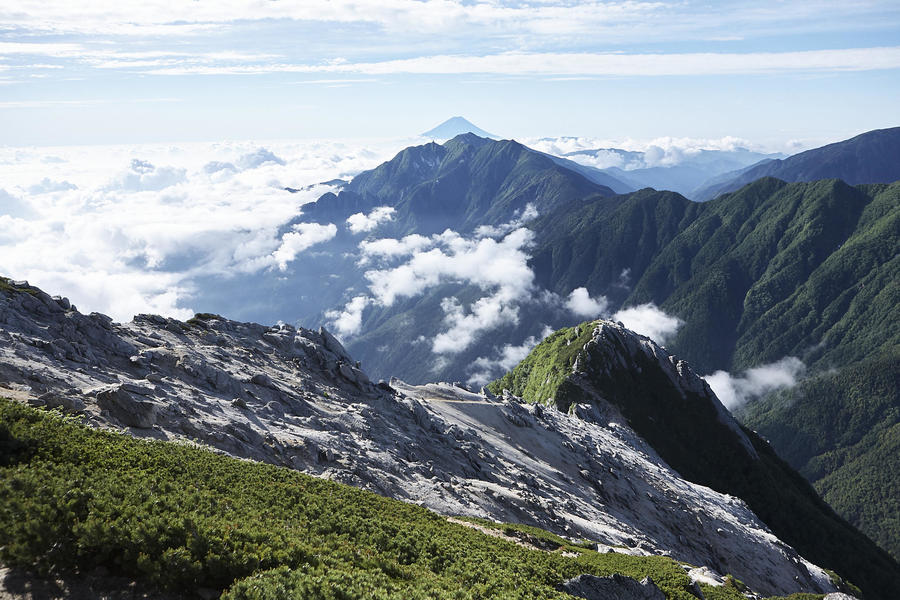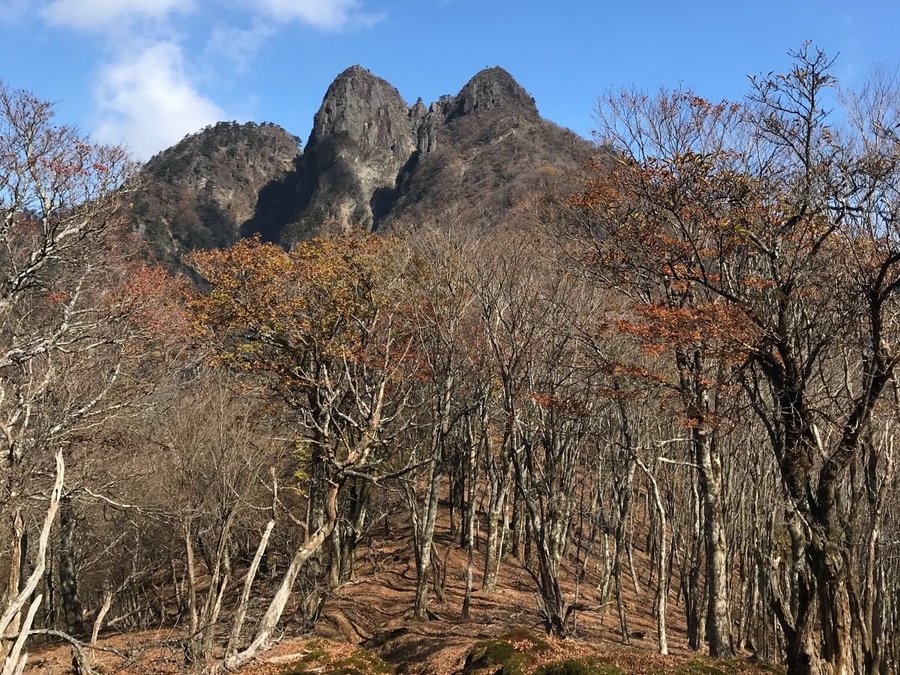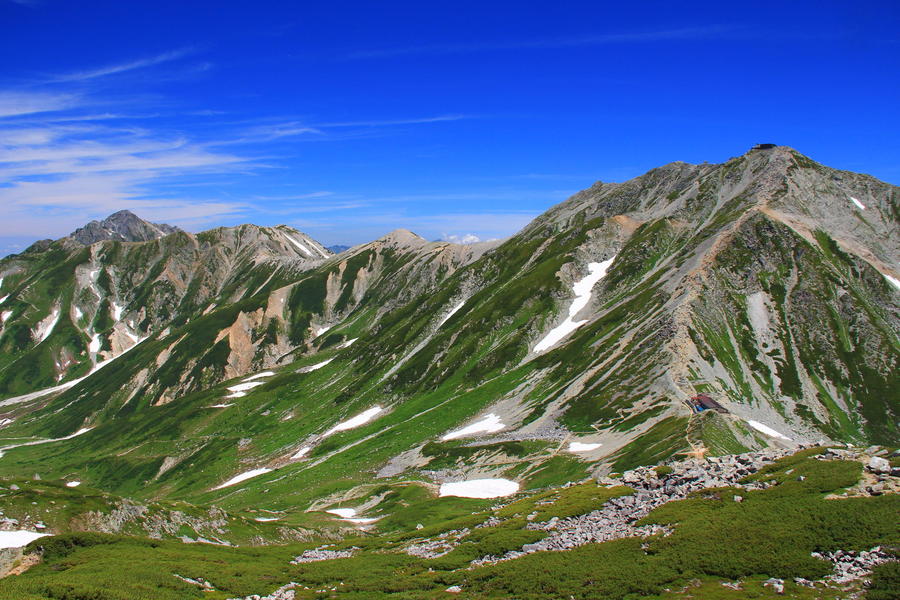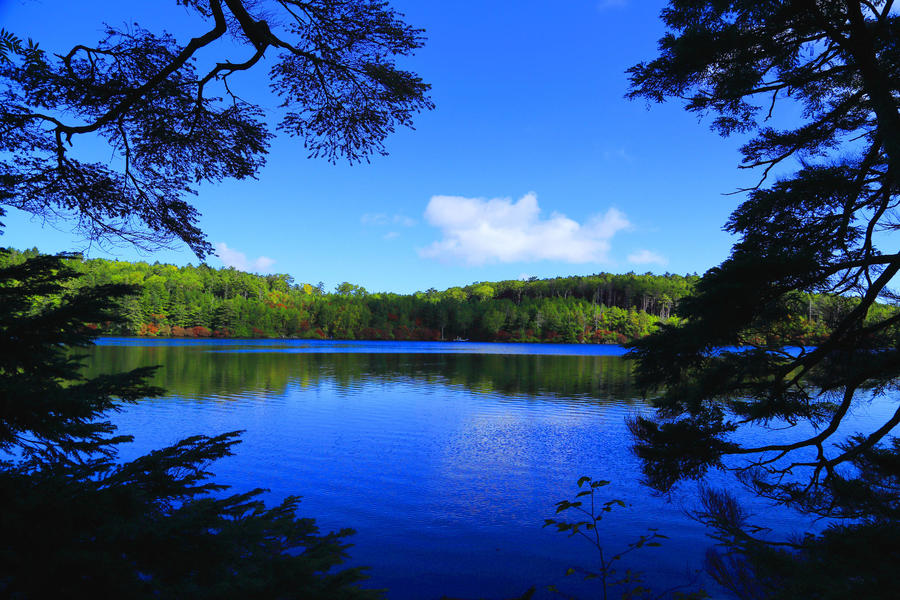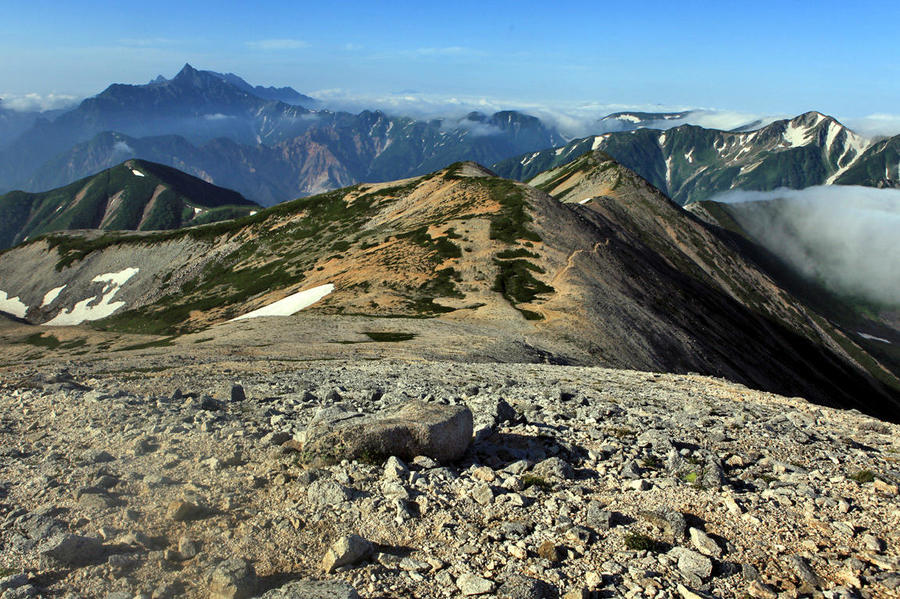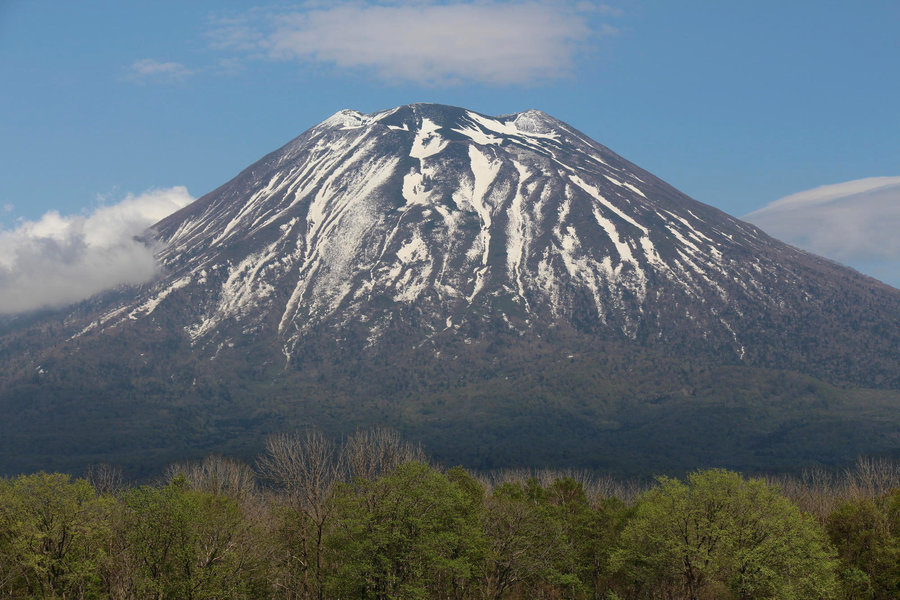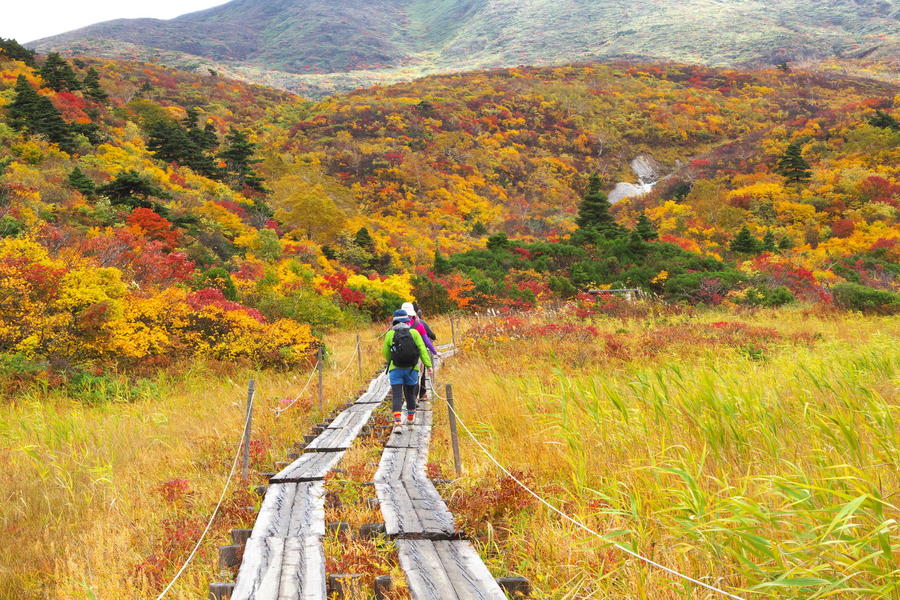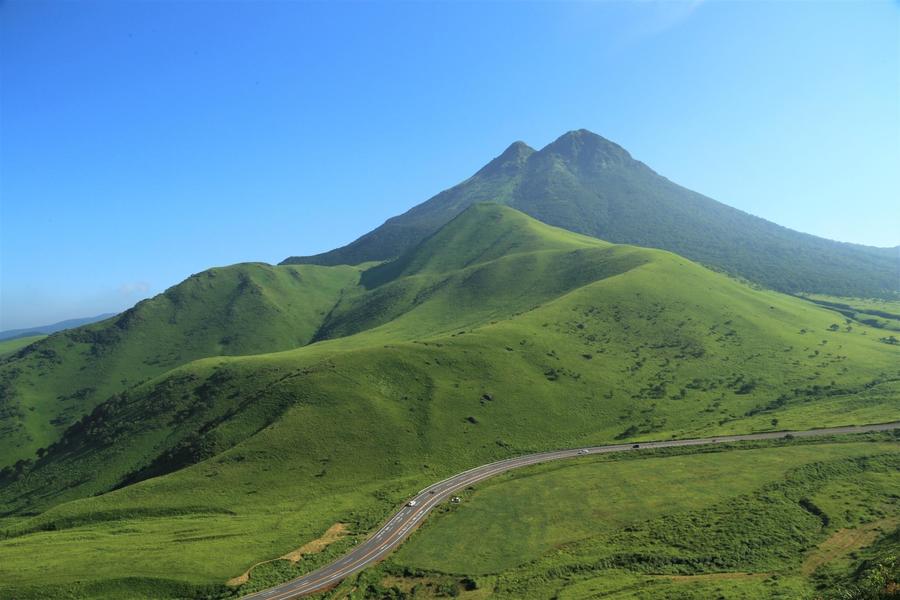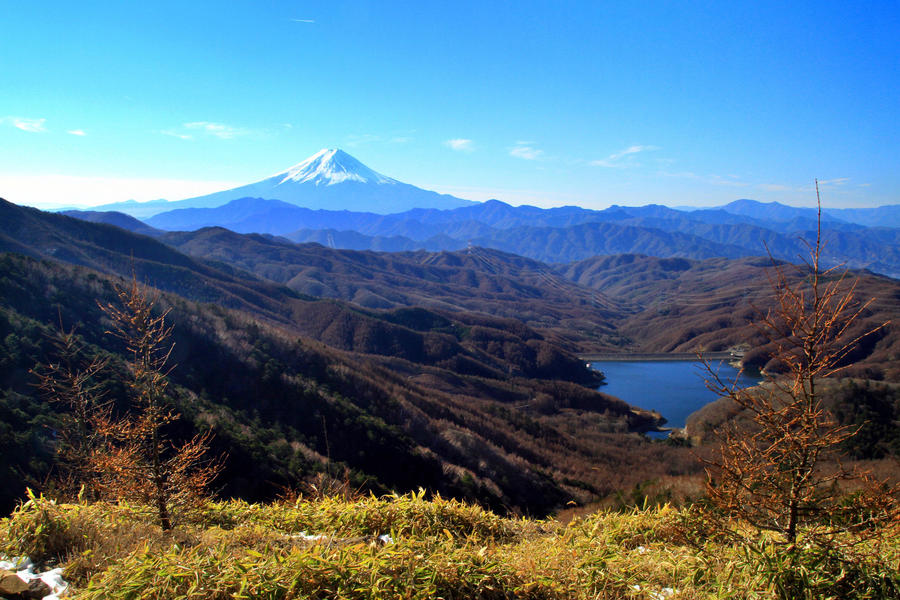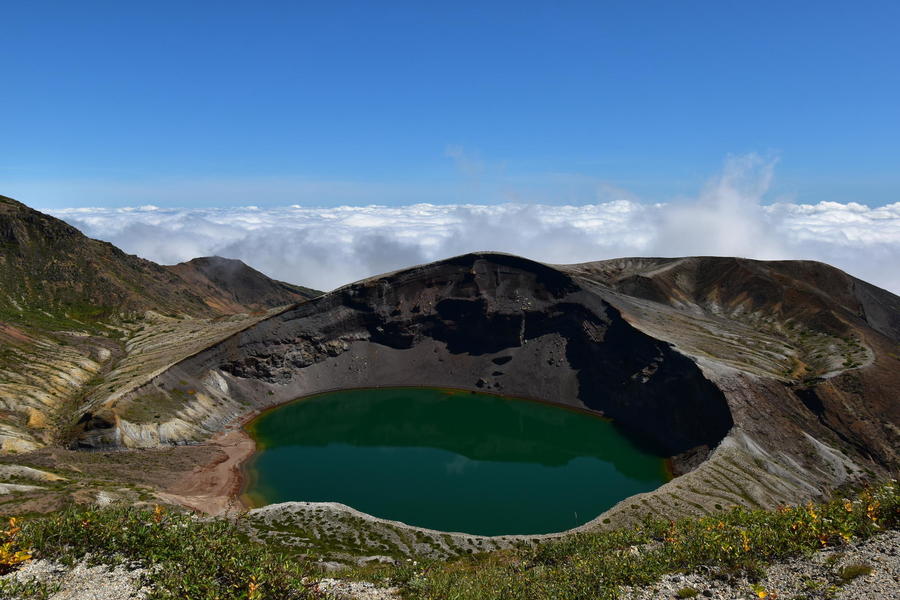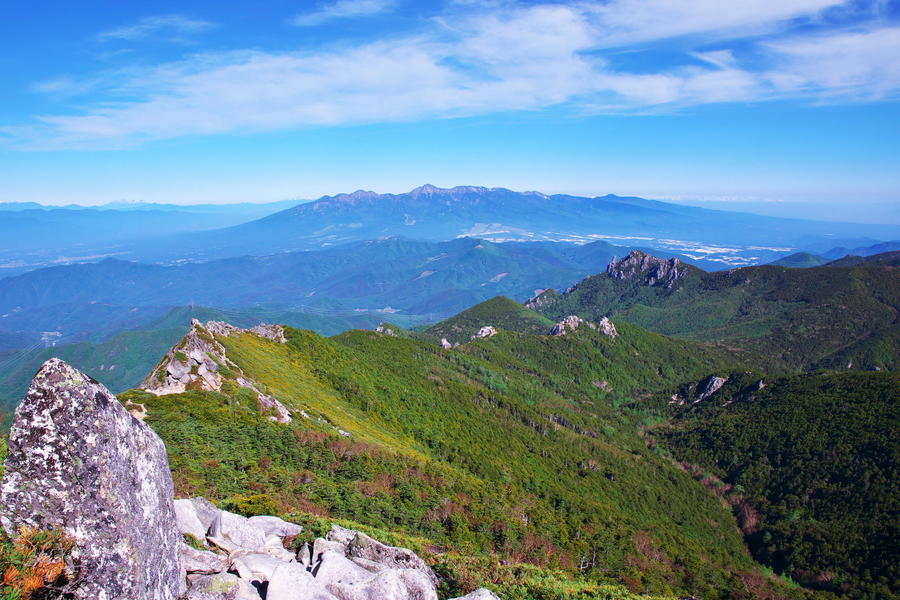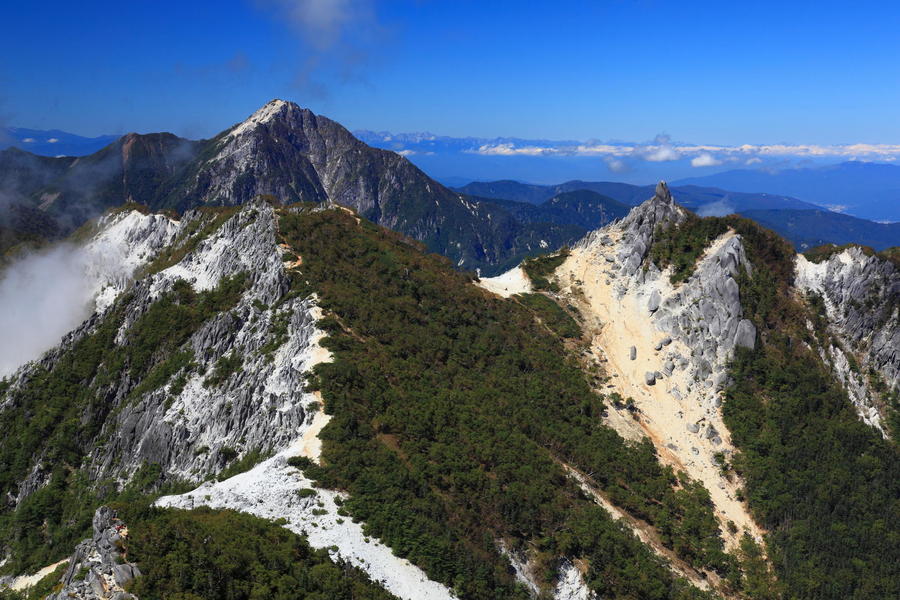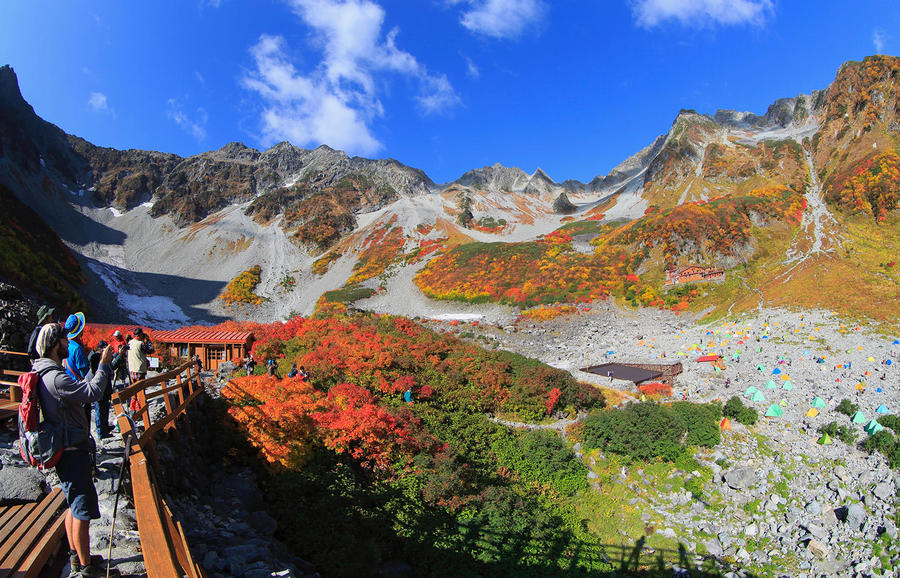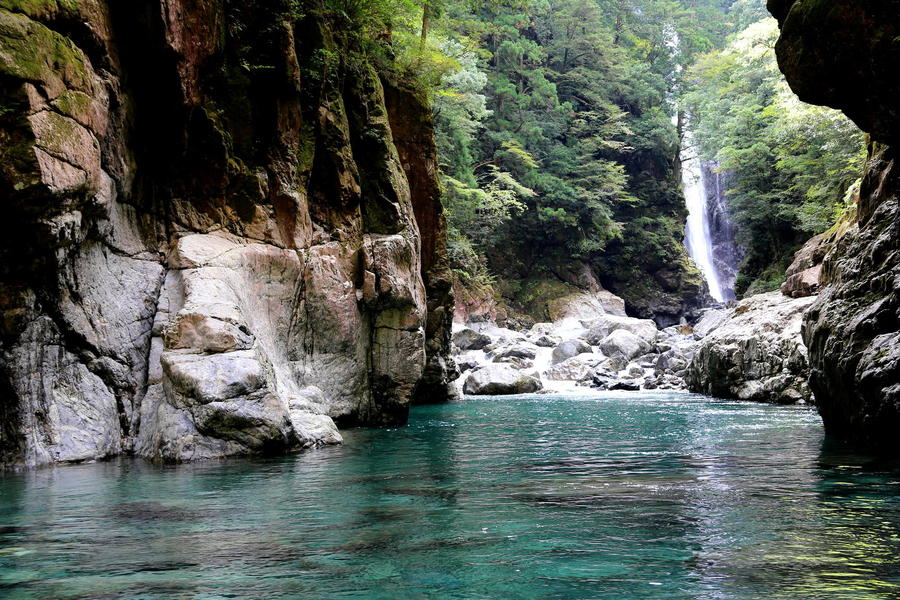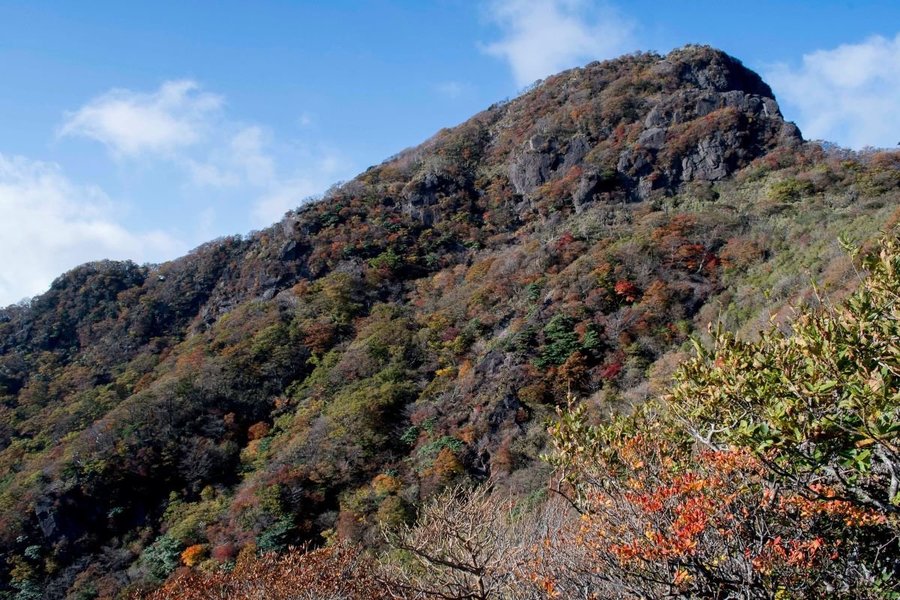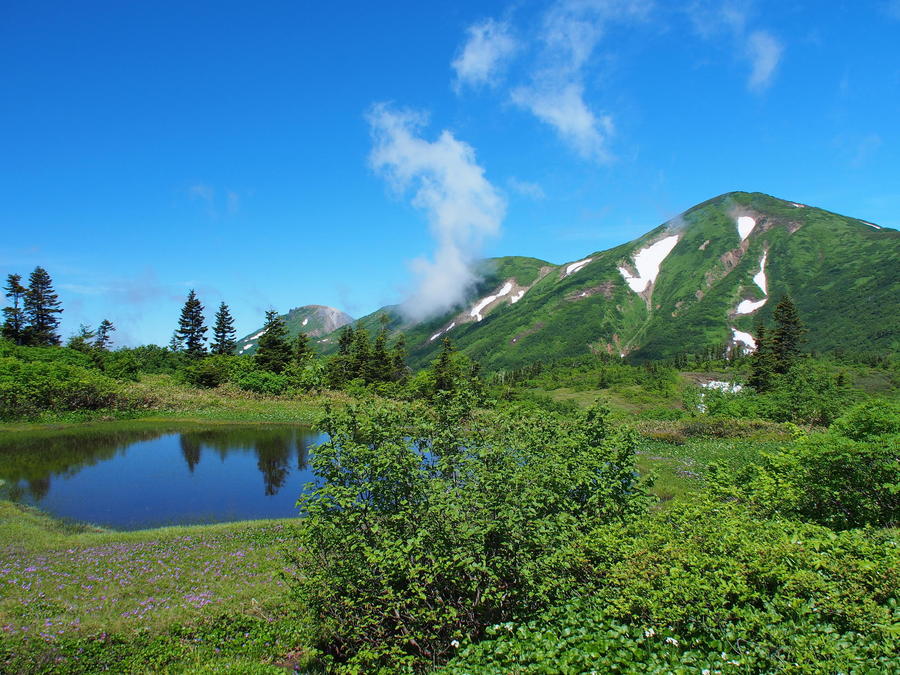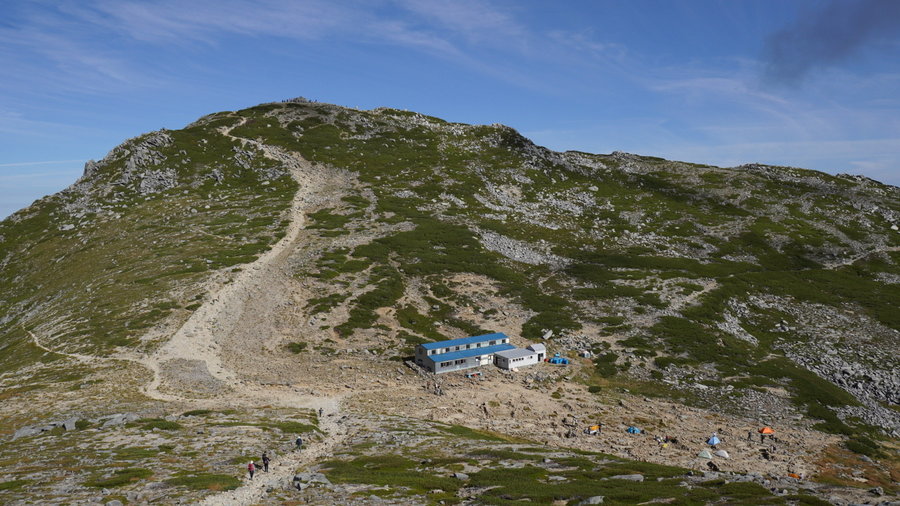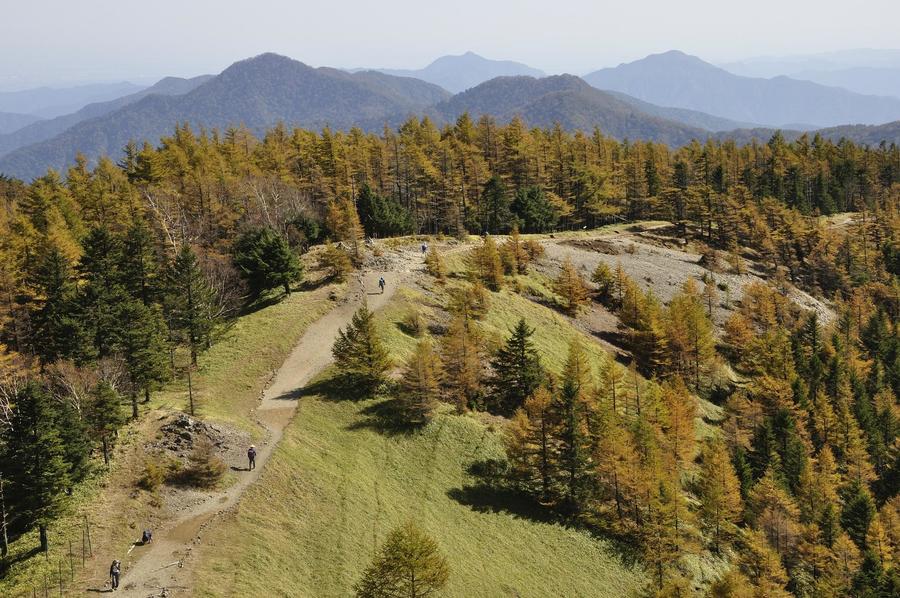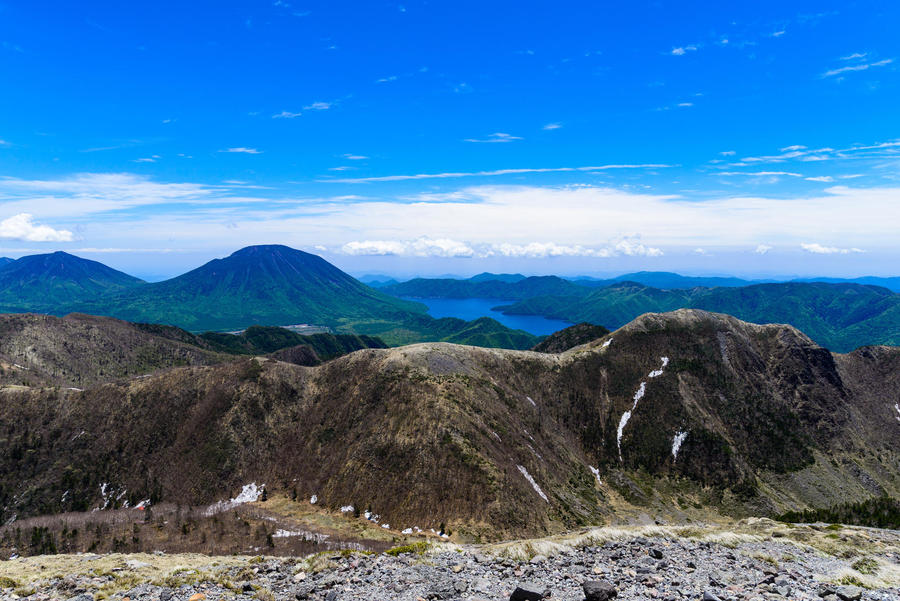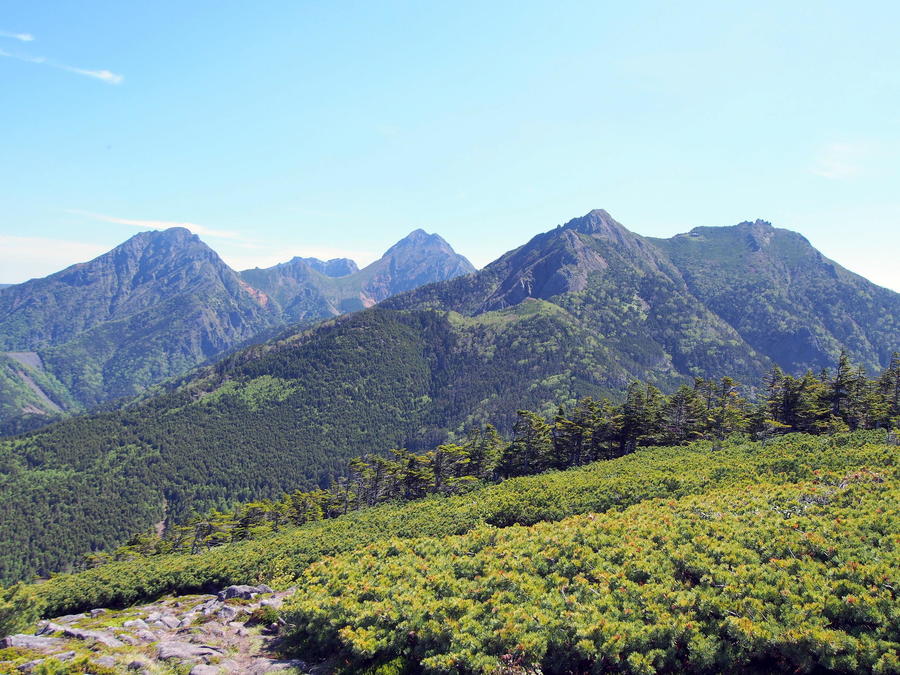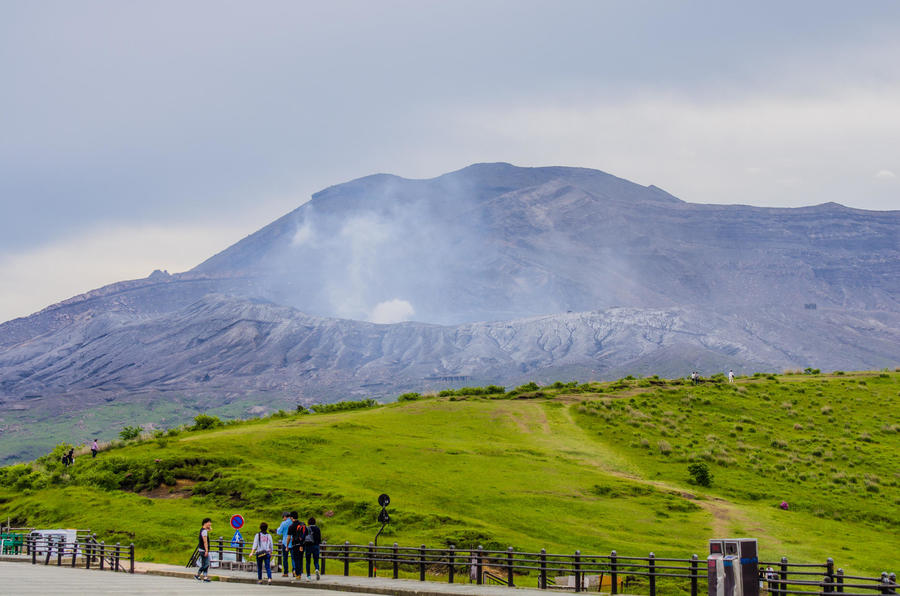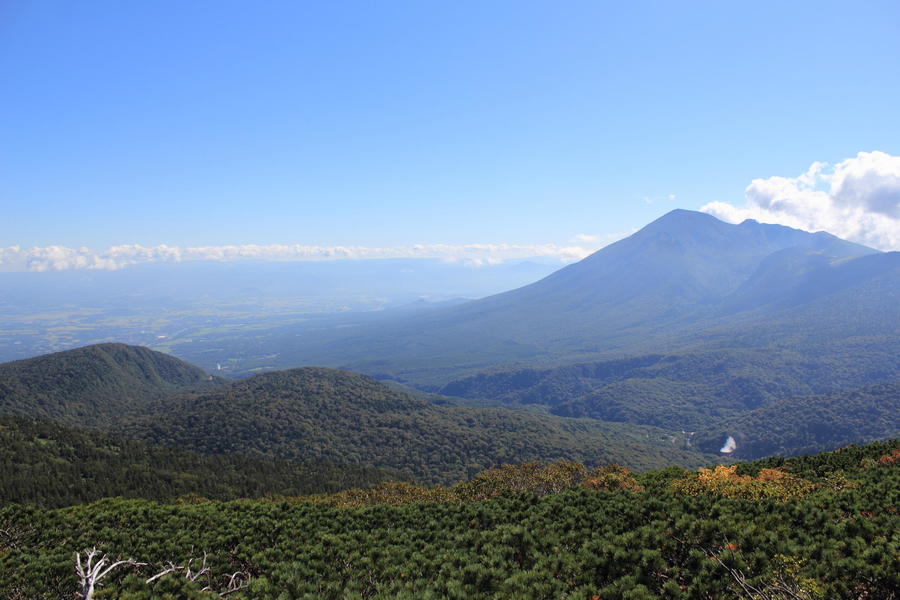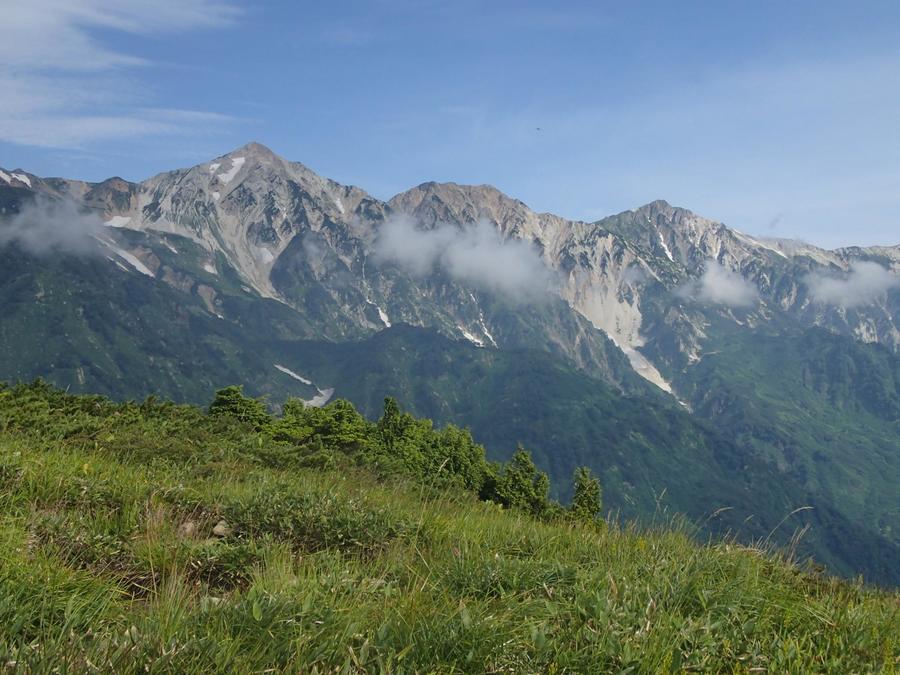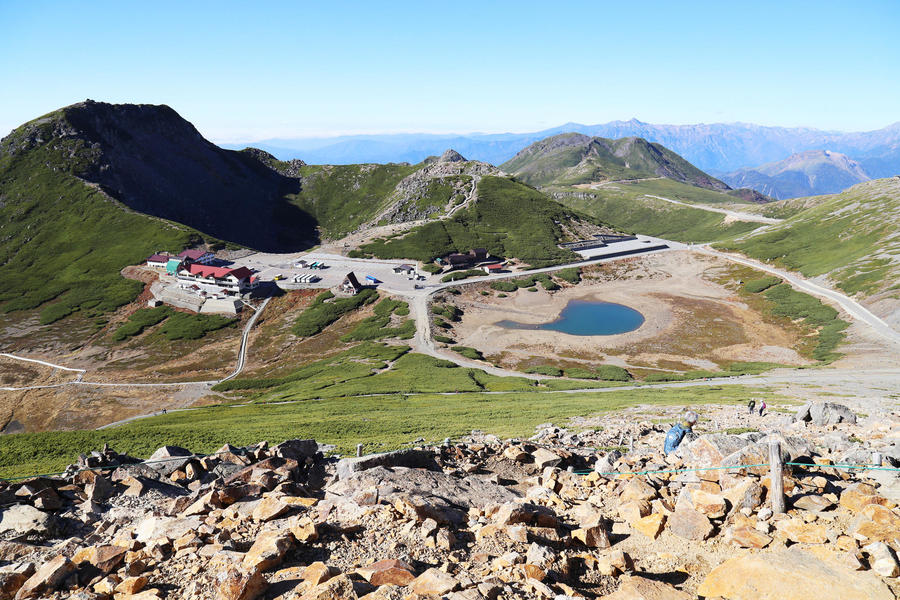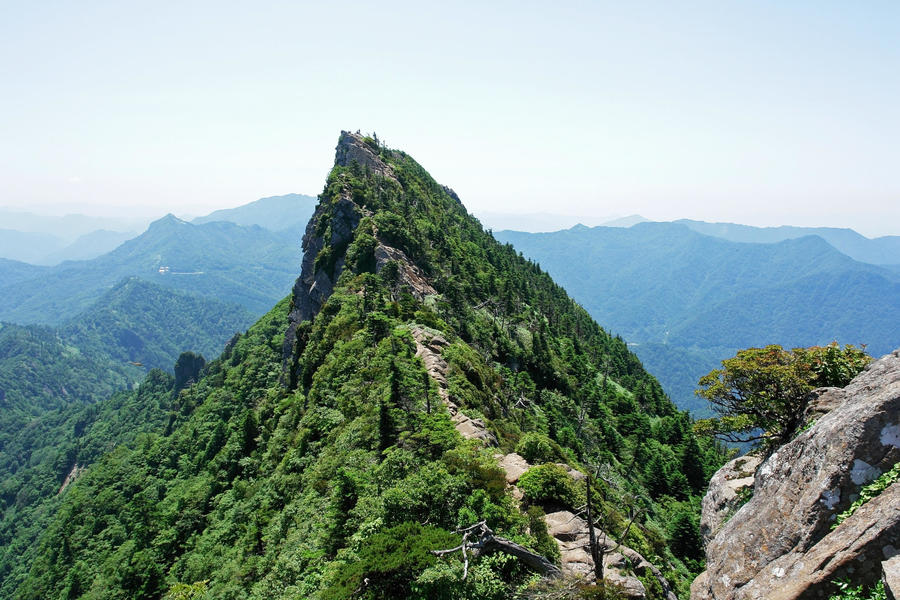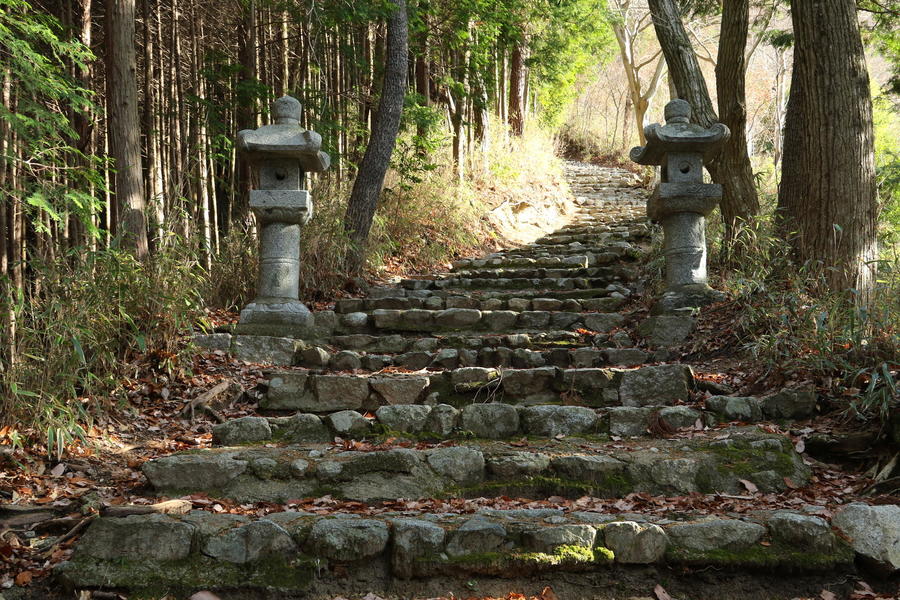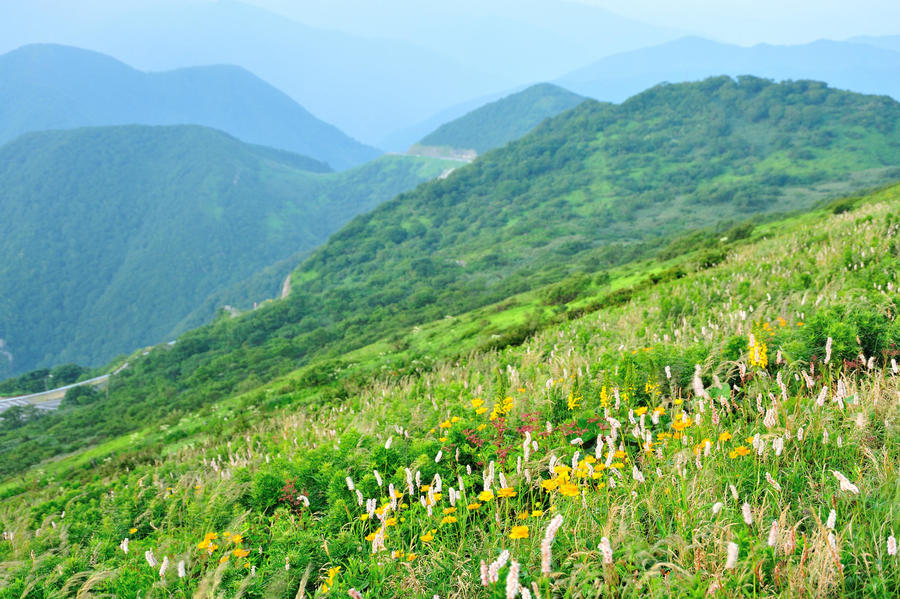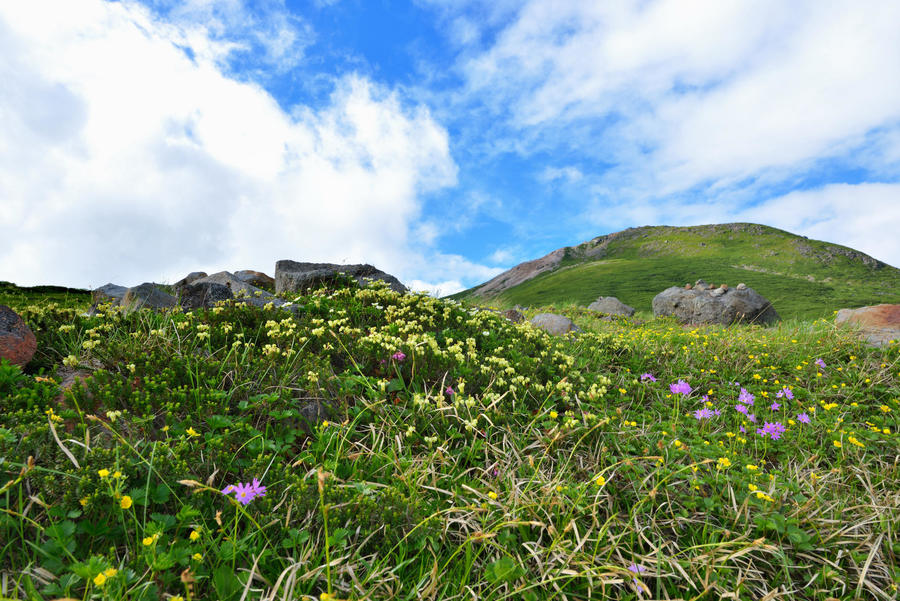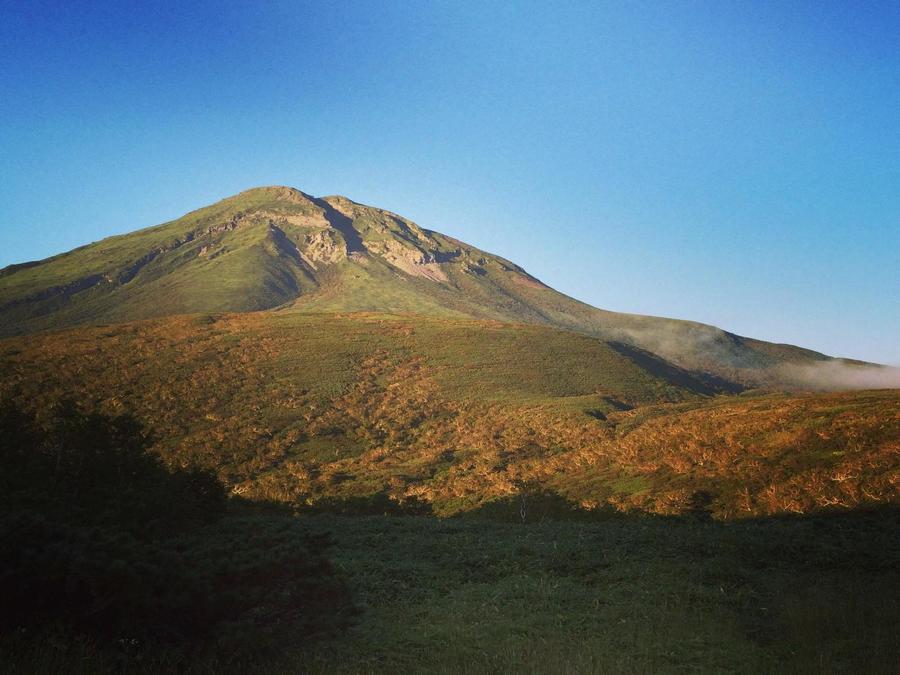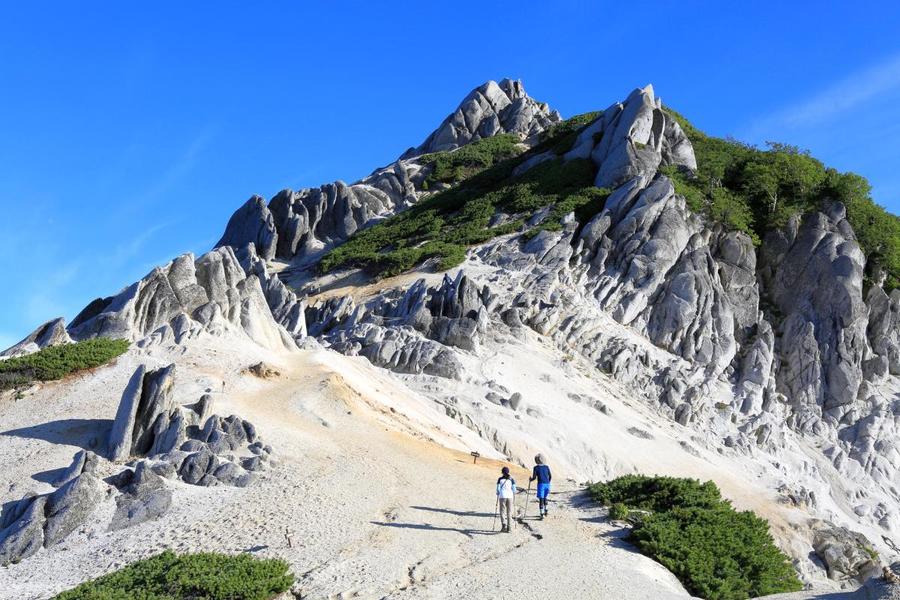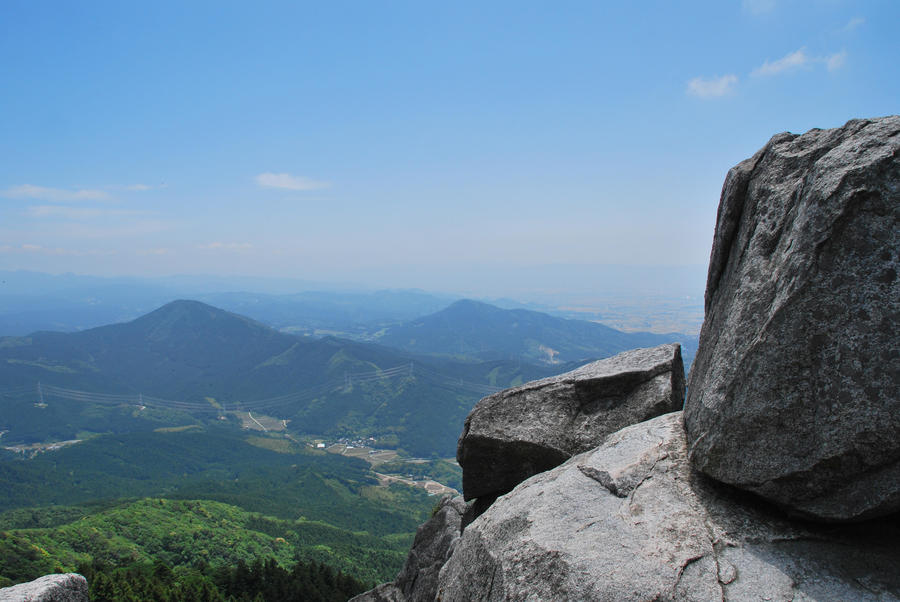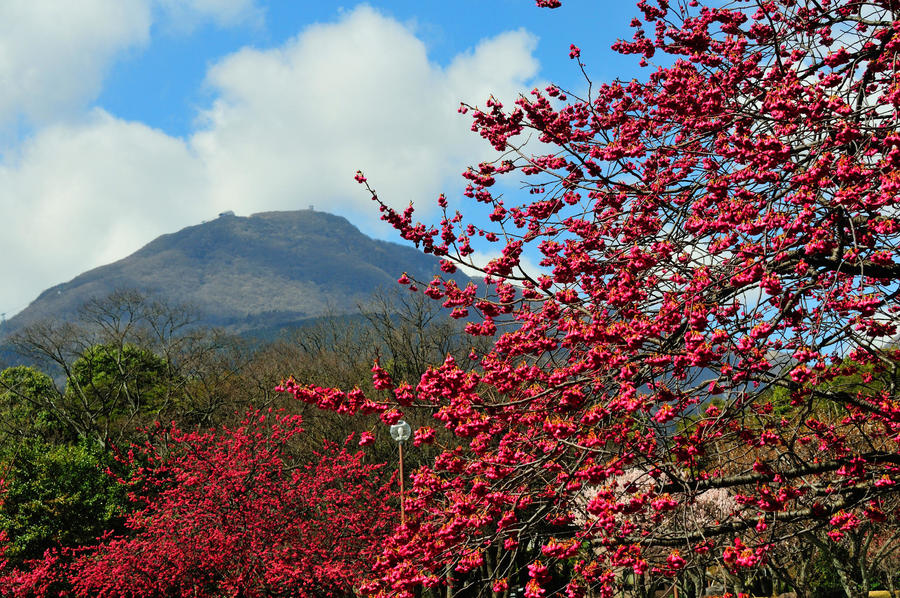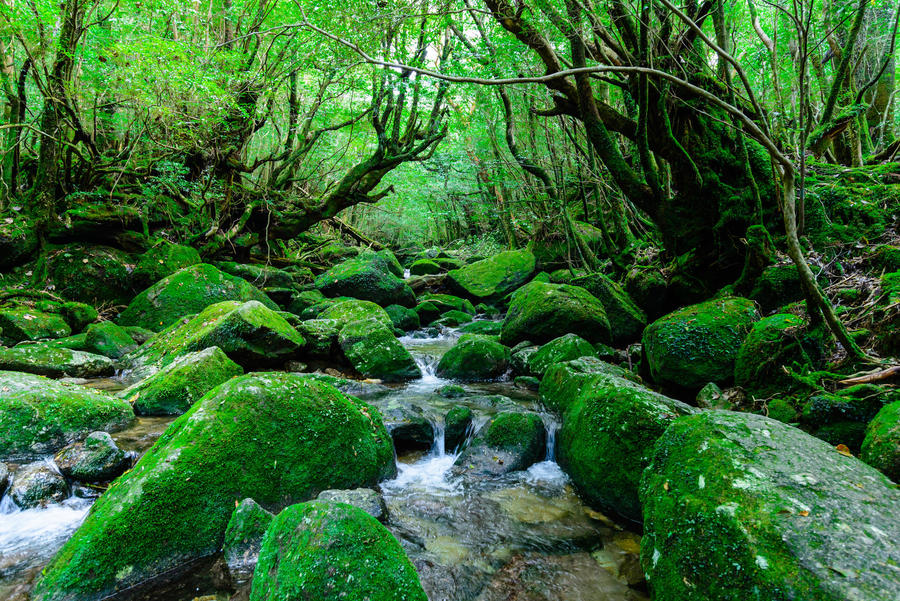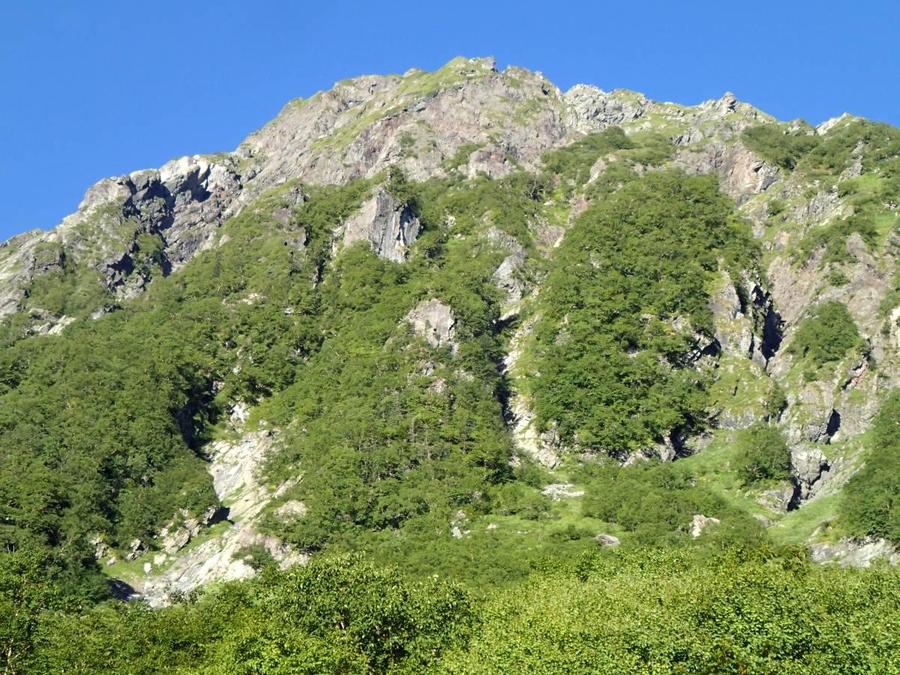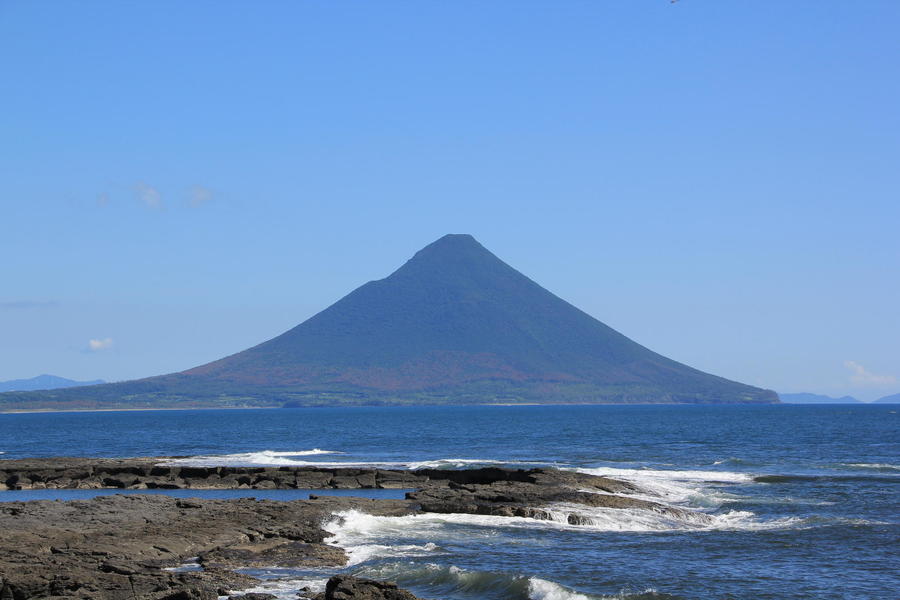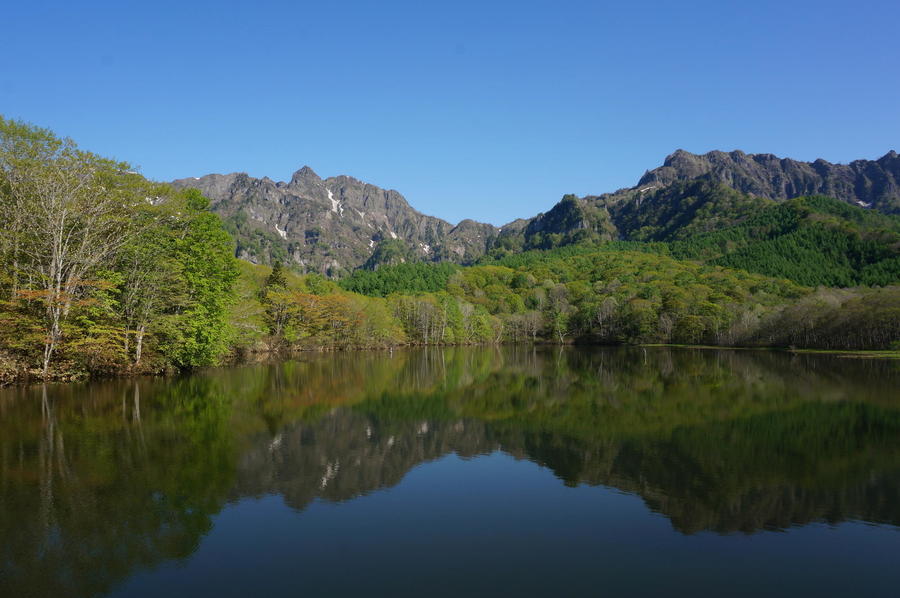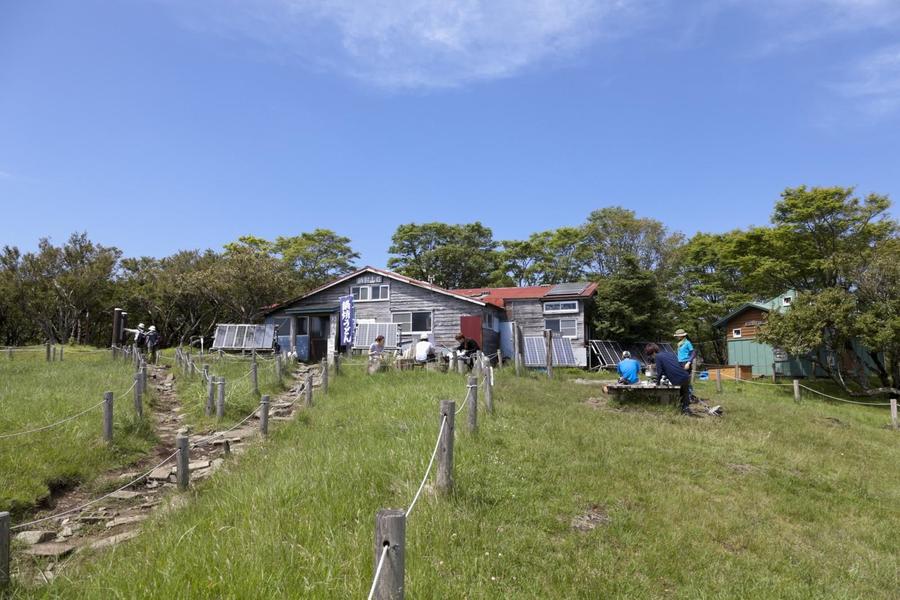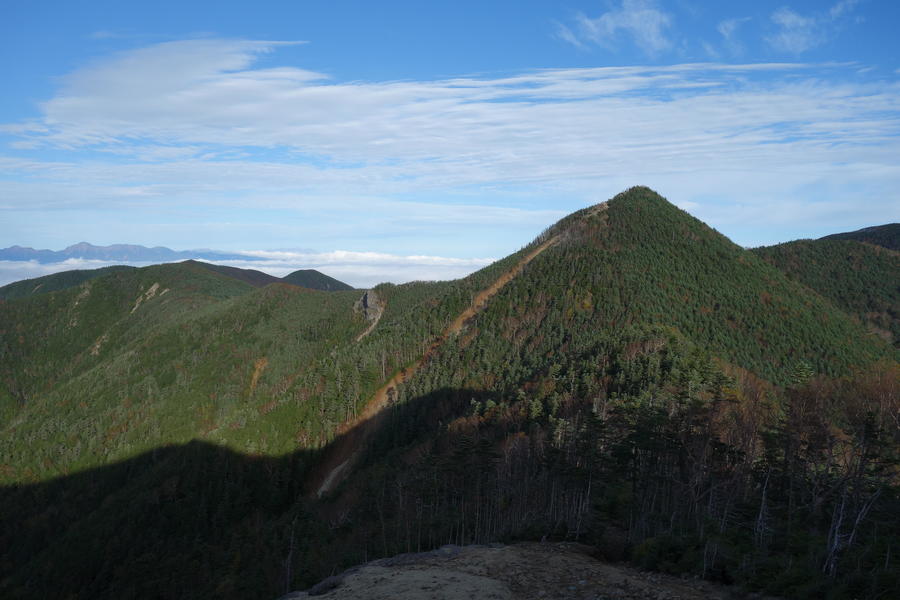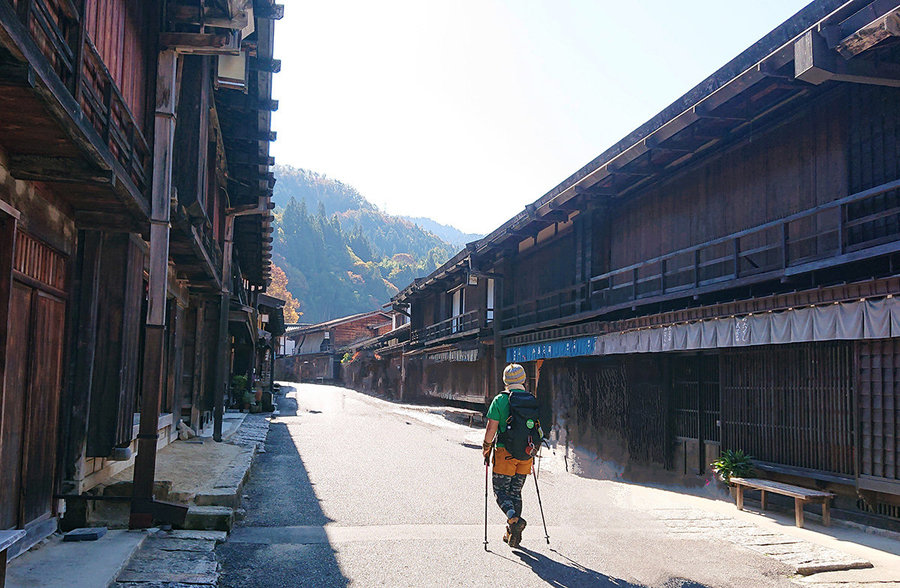Round Trip Hike of Mt. Rishiri via the Oshidomari Course
-
- Duration
- 1Day / 9Hours
- Highest Point
- 1719m
- Elevation Gain
- 1511m
-
- Skill Level





- Fitness Level





- Gear Level





After beginning your hike at Hokuroku Camping Area, you will find the route’s only water supply area at the Third Station. Kanro-sensui, which ranks among Japan's 100 most famous water, flows from a spring here. Hike through the coniferous belt and up beyond the tree line, where you pass through a stone pine belt to reach the Sixth Station.
From Hokuroku Camping Area, it will take about 2 hours to the First Observation Point at Sixth Station. From here, make your way up the zigzagging path known as the “Munatsuki Haccho” and in about an hour and 10 minutes, you will reach the Second Observation Point.
From the Second Observation Point, hike up a steep rocky slope for about 15 minutes to the peak of Mt. Chokan (Chokanzan), which commands a good view of Mt. Rishiri’s graceful, pyramid-like shape.
Hike down from the peak of Mt. Chokan to the shelter below, and then hike up the next slope to reach the Ninth Station.From Mt. Chokan, it will take about 45 minutes to get to the Ninth Station.
From the Ninth Station, the next segment of path consists of loose stones that are easy to slip on. Where necessary, ropes have been set up to help you keep your footing as you climb toward the peak. After passing the point where the course merges with the Kutsugata Course, you will eventually reach Mt. Rishiri’s north peak, where a small Shinto shrine stands. From the Ninth Station, it will take about an hour to get to the north peak of Mt. Rishiri.
The highest point on Mt. Rishiri is the south peak. Due to erosion, however, it is now strictly off-limits to hikers.
For the return hike, follow the same course in reverse, taking special care to avoid slipping and falling on the trail.
Other Info
Mt. Rishiri is renowned for its beautiful alpine flora. There is a variety of endemic plant species including rishirihinageshi (papaver fauriei), rishirigenge (oxytropis campestris var. rishiriensis), ezo-kozakura, (primula cuneifolia), hakusan-ichige (anemone narcissiflora), iwagikyo (campanula lasiocarpa), and button-kimbai (trollius riederianus var. pulcher). These colorful flowers bloom from July to August along the mountain trails.
Best Season:July to August
If you go to this trail outside of the best season, you should pay attention to weather and trail conditions, as the mountain is located in a snowy area; there may still be snow on the trail in June, and it may start snowing from September.
Notes
In the interest of preserving Mt. Rishiri’s natural environment, the use of portable toilets is recommended for those embarking on mountain excursions. These items may be purchased at the Ferry Terminal or at inns around the island. There are booths where you can use portable toilets at the Sixth Station’s First Observation Point, the Eighth Station at Mt. Chokan, and at the Ninth Station. You may deposit these items at the trailheads at the end of your hike.
In the interest of protecting the trails around the peak from the harmful effects of erosion, those requiring the use of walking poles must attach rubber tips to the ends of their poles and are asked cease using them after the point where the course merges with the Kutsugata Course. To help reduce injuries due to difficult footing on mountain trails, the use of gloves is recommended.
Route Map
Elevation Map
Spec
- Duration
- 1Day / 9Hours
- Highest Point
- 1719m(Mt. Rishiri (North peak))
- Elevation Gain
- 1511m
- Horizontal Distance
- 17.5Km
- Skill Level





- Fitness Level





- Gear Level





On the Trail
- Sleeping
Rishirizan Shelter
- Eating
Oshidomari Sea Station (Oshidomari Umi no Eki)
- Hot-Springs
Rishiri Fuji Onsen

